Cooling as a Service proponents see decentralised utility models gaining traction, proving their effectiveness in the GCC region

EDITORIAL CAMPAIGN
100 days to COP28
Dr Rajendra Shende, Former Director, UNEP
GUEST COLUMN
Achieving a “Soft Landing”
Krishnan Unni Madathil, Auditor, Bin Khadim, Radha & Co Chartered Accountants
A tale of three decades –dehumidification in challenging environments
Kandasamy Anbalagan, Managing Partner, Proleed Engineering Consultants Arresting ‘Performance Drift’ through Machine Learning
Kevin Laidler, Sales Director – Middle East & Africa, Armstrong Fluid Technology
EDITORIAL CAMPAIGN
Building Tracing & IAQ: Now the hard work begins Jeremy McDonald, Principal, Guth DeConzo Consulting Engineers
September 2023 US$15 PUBLICATION LICENSED BY IMPZ PUBLICATION LICENSED BY IMPZ AGBI REPORT HIGHLIGHTS OMAN’S GREEN HYDROGEN INITIATIVE INTERNATIONAL INSTITUTE OF REFRIGERATION ANNOUNCES APPOINTMENT OF NEW DIRECTOR GENERAL


page
COVER STORY
CaaSt-IRON CONVICTION
Cooling as a Service proponents see decentralised utility models gaining traction, proving their effectiveness in the GCC region

EDITORIAL CAMPAIGNS

100 DAYS TO COP28
Will the Bonn Realisation come to pass? Or, will the nations of the world unite to press ahead for a climate solution? asks Dr Rajendra Shende, Former Director, UNEP
BUILDING TRACING & IAQ: NOW THE HARD WORK BEGINS
Pragmatic steps to implementing ASHRAE 241 start with ventilation, says Jeremy McDonald, Principal, Guth DeConzo Consulting Engineers
GUEST COLUMNS
ACHIEVING A “SOFT LANDING”
In light of a grim 2024 economic outlook, aiming for a slow and steady drop at a business level is about ensuring the least bit of harm is done to the majority, says Krishnan Unni Madathil, Auditor, Bin Khadim, Radha & Co Chartered Accountants

A TALE OF THREE DECADES –DEHUMIDIFICATION IN CHALLENGING ENVIRONMENTS

Taking on ice rink projects is a herculean task that involves precision engineering and strong stakeholder coordination, says Kandasamy Anbalagan, Managing Partner, Proleed Engineering Consultants
PERSPECTIVE
ARRESTING ‘PERFORMANCE DRIFT’ THROUGH MACHINE LEARNING
Building owners and operators can now leverage the newfound power of Machine Learning in HVAC systems to minimise maintenance and operational costs, says Kevin Laidler, Sales Director – Middle East & Africa, Armstrong Fluid Technology
“We are now seeing a shift towards smart equipment, and there is a surge in the requirements for SMART controllers –integration of sensors, variable-speed drives and BMS compatibility.”
Beyond mega cities and projects, the true excitement in Saudi Arabia stems from the green framework shaping its environmental future.



www.climatecontrolme.com 3 COUNTRY REPORT
AN AFFINITY FOR GREEN COOLING
26
FEATURE
MARKET
AIR MOVEMENT 12
VOL. 18 NO.
SEPTEMBER 2023 REGULARS 30 Regional News 38 Global News 46 Quoteyard 04 Editor’s Note
9
08 22 18
06 10 16
Editor
Balakrishnan
Visit our website: climatecontrolme.com/digital Also available at September 2023 Cooling as Service proponents see decentralised utility models gaining traction, proving their – & Get the next issue of Climate Control Middle East early!
Ihave said this before – the technology is out there to combat climate change, but for a large part, the intent and the political will have been questionable. Entire governments seem keen on protecting their economic borders at the cost of climate action; at best, they resort to tokenism, to make sure the optics look good. And this thinking percolates to business establishments. And in all this, a fact that is staring at us, is forgotten – that climate knows no boundaries.
Where are we going wrong? As a human race, are we so myopic and welded to protecting our proximate self-interests? If yes, which perhaps is the truthful answer at this point in time, do we need to have a better understanding of the word, ‘proximate’? Simply put, the word means nearest, but how do we assess what is nearest? What is the measurement of impact of our actions?
Somewhere in history, we have de-coupled from reality and fastened ourselves to national self-interests. What else would explain the instances of energy policies that were shaped to reduce climate damage, being jettisoned in a bid to adapt to seismic geo-political shifts. ‘Bad boy coal’ is once again acceptable, to tide over a war-engendered energy crisis.
The entire discussion has become ‘us’ versus ‘them’, with the ‘them’ being developing or underdeveloped countries, SIDS (Small Island Developing States) and many other dismal distinctions. This thinking is manifested in the grudging nature of ‘offering’ concessions, which is not sustainable and, if left un-monitored, could result in negligible progress, as is the case, to date.
The implications are there for all to see. The irony is that the impact of inaction or tokenism is not only on the egregious distinctions but also on the perpetrators of inaction. We have seen massive floods and the resultant loss of lives and erosion of livelihoods and infrastructure. At the same time, we have seen raging wildfires. These are happening, and we continue to delude ourselves that there exist borders that protect against natural calamities.
We need outcome-based summits. And we need the outcomes to stick, as opposed to falling on the wayside in the aftermath of the meetings; indeed, we need to do away with stealthy back-channelling that threatens to undo the good work or to thwart the followup work that is required to see the outcomes all the way to fruition. And in perhaps an extreme case, we need a moratorium on future summits, till the recommendations that emerged from previous summits are fully addressed, else it perhaps would be nothing short of reinventing the wheel.
Climate Control Middle East magazine proudly supports the UAE President’s initiative of declaring 2023 as the ‘Year of Sustainability’.
EMPANELLED

Editor Surendar Balakrishnan surendar@cpi-industry.com
Assistant Editor (Online & Social Media)

Umika Pidaparthy umika@cpi-industry.com
Features Writer Indu Revikumar indu@cpi-industry.com
Advertising Enquiries
Frédéric Paillé +971 50 7147204 fred@cpi-industry.com
Sayf Camran Advertising Manager (Europe) sayf@cpi-industry.com


Judy Wang
Our representative in Asia (except India) +852 307 80 826 judywang2000@vip.126.com
Deep Karani
Our representative in North America +1 365 885-6849 deep.karani@cpimediagroup.com
Design Head Ulysses Galgo uly@cpi-industry.com
Webmaster Chris Lopez chris@cpi-industry.com
Database/Subscriptions Manager


Purwanti Srirejeki purwanti@cpi-industry.com
Founder, CPI Media Group Dominic De Sousa (1959-2015)

Dr Iyad Al-Attar Independent air filtration consultant, writes on specific science and technology issues relating to Indoor Air Quality, including airborne particles.
Kandasamy Anbalagan Managing Partner, Proleed Engineering Consultants, writes on the need for upholding time-tested engineering principles, which would only serve to complement advances in technology.
Antonios Dimitracopoulos Partner, BSA Ahmad Bin Hezeem & Associates LLP, writes on legal affairs pertaining to the construction industry.

Omnia Halawani Co-Founder & Co-CEO, GRFN, writes on MEP consultancy-related issues.


Krishnan Unni Madathil Auditor, Bin Khadim, Radha & Co. Chartered Accountants, carrying out an analysis of the market, writes on business opportunities for the HVACR industry.
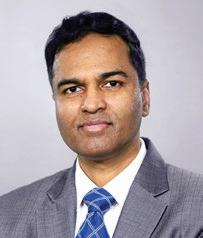
Jeremy McDonald
Principal of Guth DeConzo Consulting Engineers, in New York. He served as the technical consultant to the New York State Energy Research and Development Authority in development of an IAQ guideline for Higher Education in NY: “Covid-19 Response Guide, State University of New York”.


Dan Mizesko Managing Partner/President, US Chiller Services International, writes on issues relating to chilled water systems, including operation & maintenance.
Nabil Shahin International Technical Director, AHRI MENA, writes on HVACR-specific regulation issues.
Head Office PO Box 13700, Dubai, UAE Web: www.cpi-industry.com Printed by: Jaguar Printing Press L.L.C © Copyright 2023 CPI Industry. All rights reserved. While the publishers have made every effort to ensure the accuracy of all information in this magazine, they will not be held responsible for any errors therein.

September 2023 4
Published by
Co-Founder & Commercial Director Frédéric Paillé fred@cpi-industry.com COLUMNISTS
Co-Founder & Editorial Director Surendar Balakrishnan surendar@cpi-industry.com
House of cards
@BSurendar_HVACR EDITOR’S NOTE
Surendar
THE SMARTER FUTURE





Gulfood Manufacturing offers innovative solutions to connect the global food manufacturing industry, providing platforms to unveil new products, services and technologies, connect with industry leaders, address key challenges, create new business opportunities, and gain valuable insights into emerging market trends.



7-9 NOV 2023

4 EVENTS | 3 DAYS | 1 VENUE
DUBAI WORLD TRADE CENTRE
REGISTER TO VISIT gulfoodmanufacturing.com
PLATINUM SPONSOR
MACRO-ECONOMIC ANALYSIS:
By Krishnan Unni Madathil
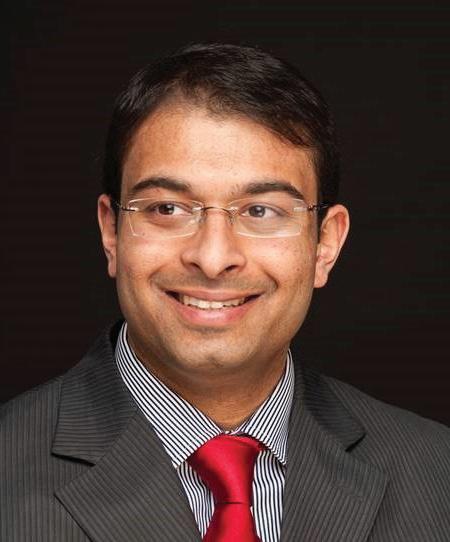
ACHIEVING A “SOFT LANDING”
IFIND MYSELF being grimly vindicated by the fruition of the predictions I had made in previous editions of Climate Control Middle East about the rough course of the global economy. The trifecta of challenges hitting the global economy at once in the period 20202022 – the coronavirus pandemic and the lockdowns; the productivity sluggishness; and the supply shocks brought about by increasing geopolitical fissures, including the Russia-Ukraine War as well as USChina tensions – have slowly begun to bear its grim outcome on the world. The series of interest rate rises in the United States by the US Federal Reserve and the domino effect of that on interest rates all over the world is also being felt, in the form of higher borrowing costs and liquidity crunches.
A few banker colleagues I spoke to over the past few weeks have openly confided in me about their industry’s “anticipation” of a global slowdown in 2024. In other words, they have seen the icebergs in the distance and are preparing in advance to launch the lifeboats. Jack and Rose – you and I –are we still dancing?
To my mind, the phrase that has been carrying us through most of the year, and that which will be our pole star for the remainder of the year well into 2024, is “soft landing”. Everybody is trying to achieve that – in multiple human endeavours – some better than others. In space flight and exploration of interplanetary bodies, such as the Earth’s natural Moon, we have had multiple countries try and achieve a “soft landing” of their space contraptions, rather unimaginatively but practically called “landers”. Many have succeeded, many have not.
India achieved the difficult task of achieving a “soft landing” for its lander/rover module, called “Vikram/ Pragyaan”, part of its “Chandrayaan-3” mission, on a location in the Moon’s South Pole region, a world first. It beat space superpower, Russia to the task, whose Luna-25 mission unfortunately ended up a sorry wreck on the Moon’s surface. There is something poetic about the success of India’s long-winded, well-prepared, slow, steady, controlled and pragmatic approach to achieving the “soft landing” of its payload, which is about the weight of a minibus (3,900 kilograms), when contrasted with the seemingly hurried approach of the Russian mission to the same objective.
And there may be learnings from the contrasting outcomes of these moon missions for economics, as well, given that the aim of most countries in the world for the remainder of the year, and into the next year, will be to achieve a “soft landing” here on Earth. This applies to our companies and enterprises, too, as we navigate extremely troubled times and, perhaps, a phase in the business and wider economic life cycle, which can broadly be termed as “productivity fatigue”. Our companies, too, led by their management and answerable to multiple stakeholders, are trying to achieve a “soft landing” in the face of multiple economic, political and environmental shocks.
The Indian mission was characterised by its immense creativity in the face of biting constraints, and leveraging of the natural gravity of planetary bodies to “slingshot” itself between them; one, “out” from the Earth’s gravity through controlled bursts of fuel to accelerate the mission vehicle
into ever greater orbits around the Earth; and two, “into” the moon’s gravity through controlled bursts of fuel, again, this time to decelerate the mission vehicle into ever tighter orbits around the moon. Like Columbus’ Egg, this looks extremely simple to explain, now that it has been done. By contrast, the Russian mission took the direct approach to the moon, spending way more fuel, ostensibly to save time, and high on confidence on the back of legacy and previous performance.
The results are there for us all to see.
In the programmed series of interest rate rises of the US Federal Reserve, as well as the domino effect this has set off on interest rates across the world, we see something of the Indian space mission’s limited bursts of fuel, this time leveraging the natural laws of economic theory, to achieve a “soft landing” for the world economy. I only hope that they will achieve it, for we all have something to rejoice from that. What does an economic “soft landing” look like? To my mind, it looks like a situation where the least bit of harm is done to the greatest number of people. It does not mean that there will not be losers, but that those who lose most will be those who can afford most to lose. I do not need to emphasise to a reader of this magazine that this may perhaps be much more
September 2023 6
may be contacted at krishnan.madathil@binkhadimradha.com
Krishnan Unni Madathil Auditor, Bin Khadim, Radha & Co Chartered Accountants, writes a bi-monthly macroanalysis on geopolitics, incumbent political structures, global business and finance exclusively for Climate Control Middle East
He
Given a rather grim economic outlook for 2024, aiming for a slow and steady drop at a business level is about ensuring the least bit of harm is done to the greatest number of people, says
Krishnan Unni Madathil
difficult an endeavour than even landing a truck on the moon, softly and with precision!
The problem may be with us, who still hold tight to memories of the economy of the previous two decades, and with an inadequate view of the nature of the upcoming economy of the future and its characteristics. In the face of overwhelming reality, our wails and cries of alternate disbelief and discomfort may seem petulant. But it is what it is. What we can predict based on what we know is that for the foreseeable future, economic growth will be more subdued. The runaway growth of the previous 2-3 decades, driven by rapid globalisation, historically low borrowing costs and a red-hot property sector, will not be something that is likely to be extant for a good few years. This is going to affect everything, from the borrowing costs of your house to your car-loan, from your child’s education loan to your healthcare costs, and from your business loan to your refinancing costs.
The limiting factor for the Indian moon mission, the singular controlling metric deciding its course, the number of orbits it would take, how it will land and how long the lander/rover module will operate, is nothing other than “fuel”.
All other decisions surrounding the entire mission are based around this singular controlling metric.
In the case of the Chandrayaan-3 mission, while it used various Earthbased fuels to propel itself on its slingshot course, once on the moon, the lander and the rover are utilising solar panels to generate the power needed to operate. The mission will last 14 days from the day of landing. Why? Because the lunar day lasts for that period of time, and the solar panels will cease to generate power after that. Whether the mission can live up to the next lunar day, and then regenerate and resume from where it will leave off, is yet to be known.
For businesses and enterprises here on Earth, the controlling metric is “liquidity”. As we proceed along a period of increasing uncertainty across the world in Q4 2023 and further beyond, it only makes sense for businesses around the world to take a leaf out of the book of the Chandrayaan-3 mission, identify that conserving business liquidity is of fundamental importance to navigating a turbulent environment, and make business decisions with this aim at the centre. This will involve reviewing the balance sheet in the manner of a mission director with a limited budget, identifying the main leaks
eating away at the limited liquidity and mending those, and seeing “the bigger picture” and parting away with those objectives which are beyond scope for now, and to leverage gratuitously the natural leeways, which the business environment offers.

In being extremely sparing and conservative with fuel, being mindful of budget restrictions and public pressure, in guiding the course of action, in line with fuel restrictions as well as with leveraging extant natural leeways, and thereby minimising the cost of operation, and ultimately achieving the desired-for objective, not merely has the Chandrayaan-3 space mission been proven to be cost-effective, it has also been proven to be the correct way to go about it. It is a lesson those responsible for enterprises can really take to heart.
Closer to home, but just as nervewracking as a space mission, the aim, the hope – and the resolve – for every enterprise leader or person of responsibility is to achieve a “soft landing”. Can your Chandrayaan-3 achieve that?
CPI Industry accepts no liability for the views or opinions expressed in this column, or for the consequences of any actions taken on the basis of the information provided here.
www.climatecontrolme.com 7
100 DAYS TO COP28
Will the Bonn Realisation come to pass? Or, will the nations of the world unite to press ahead for a climate solution? asks Dr Rajendra Shende

THE TIMELINE: ABOUT 200
DAYS TO COP28. The venue: A climate conference in Bonn, Germany. The world witnessed the first signal that there is a grave risk to negotiations. Signs emerged in Bonn that COP28 may be swept away in a flood of arguments and counteragreements between developed and developing countries. A realisation emerged that any meaningful intent is likely to get buried under landslides of the unfulfilled promises by developed countries and possibly be lost in dense fogs generated by wildfires of selfinterest of nations.
Cut to the present – about 100 days to COP28 – and we see that the risk is intensifying. But first, let us examine in detail what happened 200 days ago.
In a preparatory meeting leading to COP28, in June 2023, the world witnessed unprecedented scenes. The preparatory meeting was termed as SB58 (the 58th meeting of subsidiary bodies to COP). Out of the scheduled 12 days of the meeting, seven were lost to haggling when it came to finalising the agenda for the meeting. On the eighth day, the still-disgruntled delegates agreed to an agenda. The meeting in the subsequent four days was a theatre for half-hearted talk-shop. Evidently, the delegates were in no mood to recognise that the world is in a race against time to address the climate crisis. They just overlooked the fact that the climate emergency, for which they have to be prepared to address, is at their doorstep. From California to Comoros, from Australia to Afghanistan and from Siberia to South Africa, no one has been spared from climate disaster in 2022-2023.
So, why did the finalisation of the
agenda of SB58 become a wrestling match? The reason was simple – it had issues that would pin down the countries during COP28. No country was in a mood to face such a situation in December, be it the stock-taking of the promised phaseout of fossil fuels or finances promised by the developed countries to developing countries for almost every climate action under the sky. That included capacity building for action on climate, mitigation of emissions, adaptation to climate change, loss and damage in developing countries, carbon off-sets, tree-cover, and even carbon-capture and removal. From Day One in SB58, the squabbling started and, later, became a deadlock for seven days. Just imagine, seven precious days lost to time.
At the end of SB58, delegates were in a lost stage, with some openly expressing that the last opportunity before COP28 had been squandered away. The ‘trust deficit’ between developed and developing countries was the root cause. As per Article 4 of the Paris Climate Agreement of 2015, all countries agreed to return in five years to submit updated and enhanced commitments related to mitigation. Article 4 also included provision for updated and enhanced commitments of financial assistance from the developed countries. By 2020, and even later, quite a few countries submitted and continue to submit such commitments.
COP28 is being called as a ‘globalstocktaking conference’, where the commitments and their implementation would be assessed. The 2022 emissiongap report of UNEP showed that emissions are increasing unabated. Financial reports also reveal that there is a widening gap between promised
financial assistance and what actually has been provided to the developing countries.
Strangely, global stock-taking will be taking place at a time when climate disasters are becoming widespread, and are increasing steeply in intensity and frequency. July 2023 was the hottest month on record. Wildfires are still burning in Algeria, Canada, China, Croatia, Greece, Spain, Tunisia and the United States, probably for the longest ever period in a year. Floods, hurricanes, landslides along with wildfires are making the exercise of global stock-taking look more and more like assessing the lifelines of a patient on deathbed.
While the above scenario points to the risk of failure of COP28, many are wondering if Artificial Intelligence should now be deployed for finalising the agenda and Chat GPT be used for negotiations. High-tech humour aside, there is still an opportunity to bring back the derailing process of negotiations. One of the principles of global diplomacy, particularly in environmental accords, is that when the discord is obvious amongst a large group of countries, dialogue is promoted in smaller groups.
H.E. Dr Sultan bin Ahmed Al Jabar, President-Designate of COP28, has
September 2023 8
Dr Rajendra Shende is Former Director, UNEP; Coordinating Lead Author of IPCC-2007, which won the Nobel Peace Prize; and Founder Director, Green TERRE Foundation. He may be reached at shende.rajendra@gmail.com.
EDITORIAL CAMPAIGN COP28
been attempting such smaller group dialogues in a bid to save the global meet of 196 countries in the UAE. In other words, he is attempting to build an enabling environment to facilitate meaningful outcome during COP28.
Earlier in the year, he called on G7 nations in Japan to lead by example and make climate finance more accessible and affordable, to speed up the energy transition. His call to “replace polarisation with partnership and division with determination”, clearly demonstrates that he is for “a COP of action, a COP of unity, a COP of solidarity and a COP for all”. He showed his passion to get everyone along when he stated, “We must act together to ignite a transformational agenda that is pro-growth, pro-climate and leaves no one behind.” Considering that G7 nations represent nearly 40% of the global economy and approximately 25% of global GHG emissions, H.E. Dr Al Jabar’s call was more than just an appeal – it was meant to advance action.
John Kerry’s shuttle diplomacy for climate, which was really effective in realising the Paris Climate Agreement in 2015, has now become in 2023 a seasonal exercise that has lost the teeth and sharpness, mainly because the Unites States’ own climate stocktaking reveals a dismal picture. His consultations with countries, including India and China, are effective but still far from what the world needs today to address the climate emergency, which would soon become a climate pandemic.
Emmanuel Macron, the President of France, also dared to call a Summit in Paris in June 2023, fashioned as the ‘New Global Financial Pact Summit’. The Summit failed to deliver any concrete reform plans, though attended by leaders and finance ministers of 40 countries as well as the World Bank, IMF, and regional and national financial agencies. Many criticised it as an attempt to deviate from the real issue of pledges of financial assistance to developing countries. Others commented, “When the pandemic grips the planet, what we need is a vaccine and not a plan to reform the health infrastructure.”
H.E. Dr Al Jabar nearly made the same point when he, in his address there, said, “We need transformational rather than incremental steps forward.” His statement, “Private capital is the force multiplier that can really change the game when it comes to effective climate finance”, raises the transformational idea of engaging giant private capital than helplessly depending on small (and poorly performing) international financial agencies. H.E. Dr Al Jabar was, in fact, presenting disruptive financial engineering as a pathbreaking idea.
In Mid-July, when India’s Prime Minister, Narendra Modi, during his official visit to the UAE, met H.E. Dr Al Jabar and promised to support his presidentship of COP28, climate experts were disappointed. Though Prime Minister Modi signed trade and related
agreements for cooperation between UAE and India, the real opportunity was missed to lead the global climate agenda and to demonstrate to the world the commitment to address the most formidable challenge of our times facing the planet. After all, Prime Minister Modi is Champion of the Earth, as awarded by United Nations, and H.E. Dr Al Jabar is winner of the ‘International Lifetime Achievement Award’ from Prime Minister Modi. The world was expecting dedication and practical global initiatives by India and UAE, similar to the International Solar Alliance declared by India and France.
The BRICS summit in Johannesburg of five countries – Brazil, Russia, India, China and South Africa – which represent 40% of greenhouse gas emissions, surprisingly seems to have just varnished over the climate issue. The forthcoming G20 Summit, to be held in early September in New Delhi under India’s presidency, is yet another opportunity for the world to ensure a meaningful outcome from COP28. It would be attended by leaders of 20 countries and nine other invited countries, including the UAE.
The very final cracked opening of an opportunity to ensure transformational success of COP28 is the United Nations’ SDG Summit on September 18 and 19 at its Headquarters in New York, during the General Assembly high-level week. It would review the mid-point progress on 17 Sustainable Development Goals. Indeed, the two SDGs – SDG7 and SDG13 – are directly related to climate change, and others are all indirectly impacted by them.
But again, that `SDG Summit’ will be a global meet of leaders that may not be as effective in making a difference to environmental diplomacy. Transformational and accelerated action, as ensured in smaller group meetings, is the need of the rest of the 100 days. Small is not only beautiful but also impactful.

www.climatecontrolme.com 9
CPI Industry accepts no liability for the views or opinions expressed in this column, or for the consequences of any actions taken on the basis of the information provided here.
EDITORIAL CAMPAIGN Building Tracing & IAQ
NOW THE HARD WORK BEGINS
Pragmatic steps to implementing ASHRAE 241 start with ventilation, says Jeremy McDonald
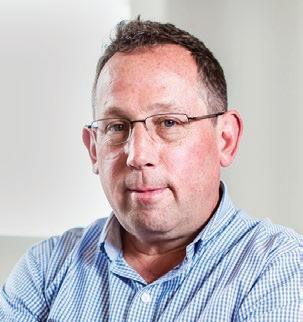
WITH ASHRAE’S recent adoption of the first ever infection control standard, “Control of Infectious Aerosols – ASHRAE Standard 241P”, there is finally a standard approach to improved Indoor Air Quality (IAQ), especially with regard to infectious aerosols.
Once implemented, the Standard will, for the first time, establish minimum guidelines for control of infectious aerosols. It also provides a roadmap for clients to meet the guidelines.
In the July 2023 issue, I presented a summary of ASHRAE 241. The topics discussed were:
1. Minimum equivalent outdoor air for infection control rates – prescriptive rates
2. Arrangement for air inlets and outlets
3. Mechanical ventilation guidance
4. Commissioning for infection control
5. Roadmap for assessment, planning and implementation of IAQ for existing facilities
6. Procedure for measuring effectiveness and safety for filtration and air cleaning technologies
7. O&M guidance
8. Systems Manual guideline
In the coming months, I will explore these topics in fuller detail. This column will focus on item 1: “Minimum equivalent outdoor air for infection control”. In my interpretation of the Standard, end-users will need to demonstrate compliance with the current code (ASHRAE 62.1) and start developing strategies to increase the provision of clean air.
BACKGROUND
Building code has long prescribed minimum airflow for various spaces.
ASHRAE 62 has long been the guiding standard for design engineers and HVAC professionals regarding the minimum airflow for various spaces.
ASHRAE Standard 62.1-2019 (Ventilation for Acceptable Indoor Air Quality) establishes the minimum amount of ventilation air (required by building code) for a space/building. The Standard has long provided formulae to calculate the required outdoor ventilation as a function of space usage, number of occupants and space size.
While ventilation standards are based on years of research, best practices and the collective wisdom of previous standards, too often the actual amount of ventilation air in buildings falls short of the Standard. As discussed in previous articles, common issues which occur in building operation are:
1. Spaces use conversion: Over time, spaces are converted in use, which may compromise HVAC. For example, converting a storage space to an office will require the addition of ventilation. If overlooked, owing to ignorance or practicality, this can lead to sub-standard IAQ.
2. Routine maintenance: HVAC equipment needs routine maintenance to ensure performance. Belts, fans, motors and dampers are just a few of the many items that require maintenance for a consistent operating system.
3. Unintended consequences: Modern HVAC is reliant on direct digital control systems (DDC) for most facilities. The failure of monitoring devices – temperature sensors, dampers, etc. – can lead to the DDC system unintentionally causing an HVAC system to erroneously operate. We have witnessed systems that shut
down outdoor air dampers due to failed sensors or to operator error.
4. Desire to save money: Outdoor air is expensive. By overriding outdoor air dampers and/or forcing dampers shut, building operators can reduce the amount of utility cost needed to condition the air, often to the detriment of the unsuspecting occupants of the building space.
Using a school building as an example, ASHRAE provides guidance for a diversity of spaces. The table, on the opposite page, indicates the minimum outdoor air changes, as recommended by ASHRAE Standard 62.1 – 2016: Ventilation Rate Procedure for typical higher education spaces (assuming 10 feet ceiling height).
It is important to note that ASHRAE 62 prescribes a method for calculating the minimum required airflow for a space as a function of the number of occupants and also the size of the space. For a typical office or classroom, adjusting for the contribution for square footage for a space will add about 30% to the outdoor air rate for people alone. For simplicity (please see table, opposite page), the “people airflow rate” (2nd column) for a classroom is 10 cfm/per person. Taking into account the area outdoor air rate (third column) will add 3 cfm/per person,
September 2023 10
Jeremy McDonald is a Principal, Guth DeConzo Consulting Engineers, in New York. Before the pandemic, he was an adjunct professor at Rensselaer Polytechnic Institute. Recently, he was the technical consultant to the New York State Energy Research and Development Authority in development of an IAQ guideline for Higher Education in NY: “Covid-19 Response Guide, State University of New York”. He may be reached at jmcdonald@ guthdeconzo.com.
for a total of 13 cfm/person. The new ASHRAE 241 will require a significantly higher amount of clean ventilation air, which is unlikely to be supplied by provision of outdoor air alone.
ASHRAE 241: A NEW WAY OF THINKING
ASHRAE 241 introduces new concepts, which I believe will have significant consequences for the HVAC industry and the operation of buildings. These concepts include:
Building Readiness Plan (BRP)
A custom plan for a building, which documents the engineering and nonengineering controls for a facility to achieve its goals with regard to infectious risk.
Infection Risk Management Mode (IRMM)
The mode of operation when the BRP dictates that the building occupants are at greater risk of infectious disease.
Minimum Equivalent Clean Airflow Rate
Although similar in structure to the ASHRAE 62 method of calculating the minimum outdoor airflow rate, ASHRAE 241 specifically takes into account the contribution of filtration and air cleaning devices.
The minimum equivalent clean airflow rate is much higher than outdoor air levels required by ASHRAE 62. For a classroom, ASHRAE 62 requires approximately 13 cfm/person, whereas ASHRAE 241 will require 40 cfm/person.
Increasing the amount of fresh air by a factor of 3 isn’t possible for many systems, and will drive energy cost and carbon emissions to very high levels.
ASHRAE does not require end-users to needlessly increase ventilation for all time periods, just when the building and its occupants are most at risk. The Standard properly recognises that there are certain time periods when the conditions for viral spread are more likely. The BRP will be the tool for decision-makers to decide when a building is designated as IRMM. When this occurs, building managers will be required to increase the airflow levels to the levels prescribed by ASHRAE 241.
In addition, the minimum equivalent outdoor airflow rate can rely on both air cleaning technologies and improved filtration. The Standard allows for calculation of air cleaning of recirculated air and also the use of mechanical inroom air cleaners and filters. This way, facility managers can use temporary technologies, either in ductwork or adding to the space to avoid cost retrofits and unmanageable increased energy cost.
For most buildings that have reasonably maintained and updated HVAC systems, adding improved filtration and air cleaning will be able to meet the intent of ASHRAE 241’s IRMM with a reasonable cost. Adding MERV 14 filters, which have become standard for office buildings and most institutional buildings, is a small marginal cost, and can go a long way to meet the IRMM. Air cleaning, which I will discuss more in my next column, could be quite expensive but would be marginally less than a capital investment for new HVAC systems.

For buildings that have antiquated systems or severely deferred maintenance, the cost of meeting the IRMM may be quite high. It is important to note that if a building owner needs to make a large capital investment in HVAC, they were probably not meeting the intent of current building codes, which are largely based on ASHRAE 62.
TAKEAWAYS
ASHRAE 241 is intelligently written and well structured to provide the proper improved delivery of clean air for infectious control periods, without forcing clients to make costly investments – in most cases. For buildings that have significantly deferred maintenance, the investment cost may be high. However, these buildings are probably at the highest risk, and should be fixed to avoid future “super spreader” type events.
Senior care facilities, which serve a critical role in the care of our elders, come to mind as the building sector that may need the most help. With many senior care facilities already struggling financially, adding punitive financial investment requirements ‘through’ capital upgrade may have negative consequences for this particular building sector. The approach for this most critical of health care providers needs to be thoughtfully planned by our decision makers. The time to deliberate is now, before the next infectious control issue and/or pandemic is upon us.
CPI Industry accepts no liability for the views or opinions expressed in this column, or for the consequences of any actions taken on the basis of the information provided here.
www.climatecontrolme.com 11
ADVANCING AIR MOVEMENT SOLUTIONS

The growth of the construction industry in Saudi Arabia
and the UAE – combined with a drive for sustainability and efficiency, and the growing importance of Indoor Environmental Quality – is shaping the market landscape of air movement solutions in the GCC region. Indu Revikumar, Features Writer, Climate Control Middle East, has the story...
THE EXPANSION of the construction industry in the Kingdom of Saudi Arabia and the UAE, along with the need to maintain and improve the sustainability performance, efficiency and longevity of existing HVAC systems, primarily drives the growth of the air movement equipment market, says Atam Hayat, Global Head - Sales & Marketing, Central Ventilation Systems. The strategic initiatives by the UAE government, such as UAE Net Zero by 2050 and Abu Dhabi 2030 Vision, he adds, are also contributing significantly to the huge transition we have been observing in terms of the market preferences for Indoor Environmental Quality (IEQ) equipment. Moreover, Hayat says, these strategic initiatives by the UAE government and by organisations such as the American Society of Heating, Refrigerating and Air-Conditioning Engineers (ASHRAE), Chartered Institution of Building Services Engineers (CIBSE) and the Emirates Green Building Council (EmiratesGBC)
to fortify the UAE Sustainability Agenda, have led developers and consultants to prioritise sustainable products and equipment with the highest efficiencies and the least environmental impacts.
Joining the conversation, Dinesh Rupani, Assistant General Manager, Equipment Division, Leminar Air Conditioning, says that some of the advancements in the air movement solutions in the GCC region include the use of high-efficiency electronically commutated (EC) fans with low


SFP to reduce power consumption, integration of Building Management System (BMS) with digital and analogue signals to comply with Green Building regulations and the management of ventilation air volume, achieved through demand-controlled ventilation. These have contributed to the growth of air movement solutions, recently, he adds.
Pointing to the growing awareness about the significance of clean air and IEQ, Rupani says that it has been a major contributing factor to the growth
September 2023 12 Air Movement MARKET FEATURE
Atam Hayat
Dinesh Rupani
of the market, despite major disruption during the pandemic. In the prepandemic world, he adds, the emphasis was on temperature and humidity control, but now there is a notable shift in the priorities, and there has been a heightened emphasis on ensuring that indoor spaces have a constant supply of clean and well-ventilated air. He adds: “Communities are progressively recognising the significance of incorporating fresh air units into their spaces, in line with the growing awareness of the necessity to introduce fresh air and expel stale air from living environments. Moreover, when compared with old-school methods of simply recirculating the air in the living space, future-proofing of the built environment for better infection control – building humidification, ultraviolet germicidal irradiation (UVGI), air filtration and air purification systems – can limit the transmission of viruses.”
Dipen Patel, Managing Director, ZIEHL-ABEGG Middle East, shares a similar perspective as Rupani and says the pandemic has increased emphasis on improving the IEQ of public buildings,

Weighing in, Hayat says the pandemic has increased the demand for IEQ and infection control measures, and businesses are improving their IAQ and ventilation systems to reduce airborne transmission. He adds, “There is now greater demand for air filtration, HVAC systems, disinfection technologies, and infection-resistant materials.” In this post-pandemic phase, he adds, Central Ventilation Systems has partnered with MayAir, a manufacturer of air filtration equipment, to provide customers with the most advanced filtration technology (UVGI and Bipolar ionisation) and with Novenco Building and Industry to offer IAQ solutions and air-handling brands to ensure a complete end-to-end HVAC solution to customers.
Taking the discussion to the recent advancements in air movement solutions, Hayat says the proper adoption of innovative solutions can improve the performance of buildings in the GCC region. Further, he says, the advancements in air movement solutions can transform the environmental and health performance of the GCC region while contributing to a more sustainable and healthier built environment. He also points out to some of the latest advancements, such as the new energyefficient HVACR systems, which are designed and installed to reduce energy consumption and improve Indoor Air Quality (IAQ); smart DCV systems, as mentioned earlier by Rupani; improved ventilation systems that are designed to provide better air movement while reducing energy consumption; and highefficiency air filters.
systems can save energy. “Automatic control of fresh air supply, using sensor technology, is also an effective solution, where HVAC systems operate only when required (Demand Based Control),” he says. “For instance, in a private home, the heating or cooling capacity depends on the number of people inside, or the CO2 value, for good indoor quality.”
Shifting the discussion to the market preferences regarding product features, Rupani says, “We are now seeing a shift towards smart equipment, and there is a surge in the requirements for SMART controllers – integration of sensors, variable-speed drives and BMS compatibility.” It is not solely on cost, he adds, but it depends on the client and consultant specifications on what additional features are required to achieve the desired results regarding IEQ with energy efficiency.
Patel says the focus is on modern products with low energy consumption, which are sustainable and environmentally friendly. Though cost is, and will remain, an important consideration, he says, choosing a long-term solution makes it possible to achieve the best results. The MEP market, Hayat says, seeks a balance between quality and cost-effectiveness. While some clients are willing to pay more for sustainable, innovative and higher-quality products, he says, others prioritise cost-cutting measures and propose value-engineered alternatives. “Hence, it is important to maintain a healthy balance between quality and cost-effectiveness to meet market demands successfully,” he says.
schools and office spaces. There are ongoing discussions on effectively installing IEQ systems in existing buildings, while minimising the loss of cooling or heating energy during extreme weather conditions, he says. “Our market research”, he says, “points to a customer base that values the benefits of improved IEQ, and we expect to gain even more market share as the region shifts toward self-sufficiency in the postpandemic phase, with more companies establishing local operations.”
Weighing in, Patel says predictive maintenance is an Internet of Things (IoT) trend that emphasises efficient planning of cleaning, maintenance, filter exchanges and monitoring. ZIEHLABEGG, he adds, offers the necessary platforms to help customers stay ahead with such solutions. Furthermore, Patel says, the cooling capacity requires approximately eight per cent of global energy consumption, and installing more efficient HVAC systems can significantly reduce worldwide CO2 emissions. Therefore, he says, combining premium efficient products with smart control
The growing awareness of the health consequences associated with inadequate IAQ is also driving the growth of the retrofit industry in the UAE. The retrofit projects, Hayat says, are essential to improve IEQ, and it is interesting to note that the market is keen on investing in retrofit projects that prioritise IEQ improvements, such as upgrading HVAC systems, installing air filtration systems and using low-emission building materials. Moreover, he adds, the increasing popularity of green building certification programmes, such as LEED, EGBC and CIBSE, also contribute to the importance of healthy indoor spaces.
www.climatecontrolme.com 13
Dipen Patel
Weighing in, Rupani touches upon the importance of ROI studies and lifecycle versus initial cost analyses in retrofit projects, as they serve as a benchmark to suggest if the unit in a building needs a total replacement to enhance operations and to meet the client’s requirements.

Retrofitting to exchange old products with low efficiency with new products with high efficiency, Patel says, is a trend in the region. He adds: “When cost is a driver, and the buildings are ageing, they still need to continue functioning. With all the modern and more efficient products now readily available, it is more economically viable to change components and not the complete equipment. This not only provides continuous savings and a better return on investment but also prolongs the existing equipment’s life, which is also more sustainable.”
Hayat says: “The manufacturers of air movement equipment in the GCC region must comply with local regulations and standards, such as those set by the Gulf Standardisation Organisation (GSO) and the Emirates
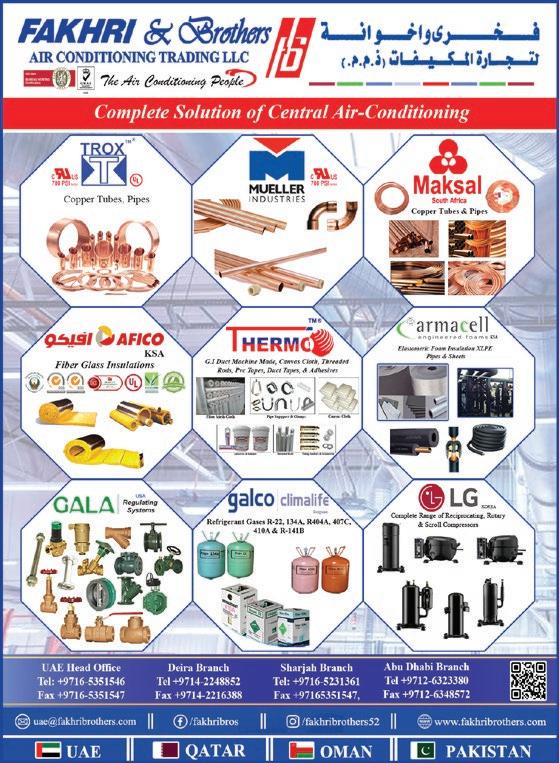

Authority for Standardisation and Metrology (ESMA).” He adds that building certification programmes, such as LEED and the Estidama Pearl Rating System, play a critical role in driving demand for air movement solutions by strongly emphasising IAQ and energy efficiency. Further, elaborating on the region-specific testing regimen for air movement solutions, Hayat says that performance parameters would depend on the product or service being tested. In this case, he adds, parameters may include performance, efficiency, reliability, and fire and life safety.
Hayat, touching upon the challenges faced by air movement equipment manufacturers, says that manufacturers face challenges such as shortage of skilled labour, supply chain disruptions and price volatility of raw materials. To overcome these challenges, he adds, they need to invest in employee training and development programmes, diversify their supply chain, look for alternative materials or suppliers, and work with local governments and regulatory bodies to comply with laws and regulations.
Rupani says the lack of regular preventive maintenance is a major concern in the industry, and many service-related calls could have been avoided if users followed the recommended periodic checks of their equipment. For instance, he says, filter maintenance is crucial to prevent clogging – leading to reduced airflow, increased power consumption and damage to other components.
September 2023 14 Air Movement MARKET FEATURE












10-11 OCTOBER 2023 Holiday Inn Al Qasr, Riyadh, Saudi Arabia ccme.events/c3 In association with Present OFFICIAL PUBLICATION PRODUCER CONTACT FOR SPONSORSHIP OPPORTUNITIES: Frédéric Paillé Co-Founder and Commercial Director M: +971 50 714 7204 E: fred@cpi-industry.com FOR EDITORIAL-RELATED QUERIES: Surendar Balakrishnan Co-Founder & Editorial Director M: +971 50 509 2457 E: surendar@cpi-industry.com IN ASIA (EXCEPT INDIA), CONTACT: Judy Wang Our representative in Asia T: 00852-30780826 E: judywang2000@vip.126.com IN KSA (RIYADH), CONTACT: Hamad Syed T: +96657 017 7925 E: hamadsyed@dhubs.io (OUR REPRESENTATIVE IN NORTH AMERICA) MEERAKI MEDIA Deep Karani T: +1(365)885-6849 E: deep.karani@cpimediagroup.com FOR EVENT AND MARKETING-RELATED QUERIES: Namrata Aswani Strategic Public Affairs Liaison and Events Manager M: +971 50 5522461 E: namrata@cpi-industry.com STRATEGIC RECRUITMENT PARTNER STRATEGIC KNOWLEDGE PARTNER STRATEGIC PARTNER (STANDARDS & REGULATIONS) EXHIBITORS BUILDING PERFORMANCE SOFTWARE PARTNER SILVER SPONSOR BRONZE SPONSOR Zamil AC STRATEGIC DISTRICT COOLING PARTNER BRONZE SPONSORS PLATINUM SPONSORS SUSTAINABILITY PARTNER PLATINUM SPONSORS SUSTAINABILITY PARTNER EXHIBITORS Zamil AC STRATEGIC RECRUITMENT PARTNER STRATEGIC KNOWLEDGE PARTNER 1 DAY SESSION ON BROAD HVAC APPROACHES SPONSORS 2 DAY SESSION ON DISTRICT COOLING SPONSORS
THEN AND NOW
A TALE OF THREE DECADES –DEHUMIDIFICATION IN CHALLENGING ENVIRONMENTS
ONE OF MY FIRST assignments as a Consulting Engineer in 1994 was to address the cooling and condensation issues around the Galleria Ice Rink, in Deira, Dubai. It was a combination of ice rink evaporation and the resultant low temperature and high humidity around, compounded by the infiltration in the corridors, resulting in mould and mildew formation.

It was, indeed, interesting to collect data – measuring the column surface temperatures at different heights surrounding the ice rink and recording for detailed analysis. Effectively, the major problem was solved by upgrading the fresh air-handling units (FAHUs) to handle the additional moisture due to ice rink evaporation and keeping the areas surrounding the ice rink under positive
pressure – a combination of additional dehumidification and fresh air quantity to positively pressurise the facility. It was a huge challenge at that time to bring the retrofit AHU inside an operating facility and commission. Working with Mario Associates, under the guidance of the legendary Mario Seneviratne, as the Lead Designer, and with SKM, as the equipment supplier, the matter was largely resolved. Successfully completing the project gave me a huge sense of satisfaction, which lingers in my mind to this day.
Rewind a few years back to 1989 – I was working as an Application Sales Engineer with Voltas. My colleagues and I had to tender for a Satellite Cooling Project in Chennai, India, wherein I heard of desiccant dehumidification for the first

time in my career. While I was excited to read all about Bry-Air dehumidifiers, the Regional Sales Manager at Voltas decided not to go ahead with the proposal, because he wanted the whole dehumidification to be carried by coils and not desiccant dehumidification. The reason – cost. Finally, we had to withdraw from submitting the proposal. Since then, indoor environment dehumidification has always been a subject of interest to me. In my long career, I have had the opportunity of working on luxury villas in Emirates Hills and Palm Jumeirah, where my team and I, at Proleed, have had to design dehumidification for indoor pools; most of them had been with desiccant dehumidification, with Munters and BryAir being the Specialist Vendors.
They say that life comes a full circle. After nearly three decades, I had an opportunity to once again work on an indoor ice rink in a sports mall in the UAE. The project: A sports-themed mall, with an NHL-sized ice rink being the USP element and the wow factor. Adearest designed and developed the ice rink and the refrigeration system. My team at Proleed executed the design of the air conditioning system for the mall and the ice rink arena. And BK Gulf was the MEP Contractor for the project.
The design focus was to estimate the fairly accurate evaporation rate
September 2023 16
Kandasamy Anbalagan, drawing from his multiple decades of experience as an MEP consultant, writes a bimonthly guest column on rapidly changing scenarii and their implications for the MEP industry. The writer is Managing Partner, Proleed Engineering Consultants. He may be reached at anbu@proleed.com.
Taking on ice rink projects is a herculean task that involves precision engineering and strong stakeholder coordination, says Kandasamy Anbalagan
Kandasamy Anbalagan
from the ice rink and select the right dehumidification equipment and system. There were many options available for dehumidification, and we weighed our choice between refrigeration type of dehumidification and desiccant type. The refrigeration-type dehumidifiers were cost-effective in terms of capex and opex. However, on further study, we noted that the refrigeration dehumidifiers were more suited for comfort-cooling applications, such as swimming pools and storage areas, where the dew points are not as low as in an ice rink application.
Hence, we opted for the desiccant dehumidification system, which GESS selected using Dehutech of Sweden. The design intent was to supply dehumidified air at 15 degrees C Dry Bulb and 2.8 gm/kg. The other key aspect of the design was the air distribution around the ice rink and the arena to ensure moisture pick up.



During construction, my engineering team had all the necessary checklists ticked, though we faced certain challenges due to the static pressure of the reactivation air fan. We were able to overcome these and were able to take the project through to the final TAB and T&C procedures. The design and construction teams worked in unison towards achieving the design parameters, leading to the successful handover of the ice rink HVAC system to the client in 2021.
Subsequently, the systems have been under regular maintenance through AMCs, and the companies involved during the construction phase have been commissioned to take care of this critical system.
Last week, I had a walk around the arena and was delighted to receive positive feedback from the end users and the tenants around the arena. It was a case of combined team effort from concept to commissioning, and beyond, which ensured a satisfying and rewarding experience for the engineer in m e.
www.climatecontrolme.com 17
CPI Industry accepts no liability for the views or opinions expressed in this column, or for the consequences of any actions taken on the basis of the information provided here.
CaaST-IRON CONVICTION
Advocates of Cooling as a Service (CaaS) say that if at all anything, decentralised utility consumption models are showing signs of deeper entrenchment in the region – evidence that they can walk the talk. Indu Revikumar, Features Writer, Climate Control Middle East, has the story...
HENRIQUE PEREIRA, CEO, Taka Solutions, in an interview he gave to Climate Control Middle East (February 2023 issue), elaborated on the benefits to be had through adopting Cooling as a Service (CaaS). He spoke of how the approach is the way forward and described it as a game-changing solution amidst turbulent financial times
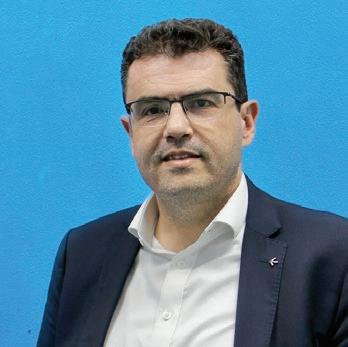
and the urgent need for substantial climate action.
About six months later, Pereira says that with more solution providers adopting different variations of the CaaS model, more and more customers are becoming aware of CaaS business models, especially in the UAE. Over the past 8-12 months, he says, the growth of
CaaS as a sustainable cooling solution in the Middle East is remarkable. “We are actively promoting CaaS and have seen positive feedback and engagement from various sectors, especially large groups and industrial facilities looking to retrofit their existing chiller plants, develop greenfield projects or expand their business operations,” Pereira says.
Joining the conversation, Fadi Shamsi, CaaS expert, ENGIE Solutions GCC, says his company, too, has

September 2023 18
COVER STORY CaaS
Henrique Pereira
witnessed an increase in demand for CaaS in the last few months across different sectors, with the highest demand coming from the industrial sector. Though ENGIE Solutions is currently in discussion with several entities, Shamsi says, deal closure is entirely dependent on the ability of all parties involved to agree on a fair tariff and on the contract terms.
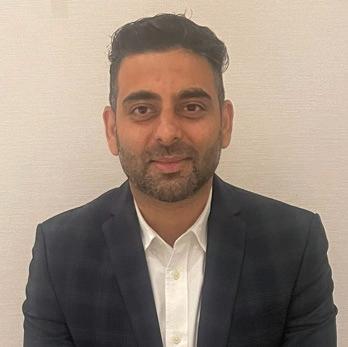 Jason Prince, GM – Sales & Business Development, EFS Facilities
Jason Prince, GM – Sales & Business Development, EFS Facilities

Services, shares a similar perspective as Shamsi and Pereira regarding the progress of CaaS in the Middle East region. From EFS’ point of view, Prince says, there has been a lot of acceptance for the concept; however, we are yet to see an actual implementation, and many projects are in the last stage of discussion. “There has been considerable progress for the CaaS model in the region, especially in accepting the concept,” he says.

Shifting the discussion to the factors that are contributing to the growth of the CaaS in the region, Pereira says the ambitious energy-efficiency and sustainability goals set by many GCC region countries are, in a way, pushing the cooling industry to adopt more innovative business models that are technically and financially feasible at a macro level. CaaS, he says, aligns with these sustainability initiatives and contributes to achieving emission reduction targets. Besides this, he says, there has been an increase in interest amongst some local government bodies to promote such new models as
Learning from SaaS
What can CaaS solution providers learn from the growth of Software as a Service (SaaS) models?
CaaS. He says: “Supportive regulatory frameworks that encourage energyefficient technologies and sustainable practices have contributed to the growth of CaaS, and we have seen some local governments taking action to promote these new models. We have also seen an increased interest from local governments in CaaS and have been working with them to promote this business model. The positive impact and result of their support in
Henrique Pereira, CEO, Taka Solutions; Fadi Shamsi, CaaS expert, ENGIE Solutions GCC; and Jason Prince GM – Sales & Business Development, EFS Facilities Services, say that CaaS solution providers can learn from the growth of the Software as a Service (SaaS) models. Pereira is of the view that CaaS solution providers can mirror the SaaS model of delivering value by addressing customers’ pain points, emphasising how the solutions contribute to energy efficiency, cost savings and sustainability, and to aligning with environmental and financial goals of businesses. Moreover, he says, CaaS providers can learn from SaaS by prioritising transparent communication, fostering long-term partnerships and by utilising data-driven insights for optimised cooling strategies. He says: “CaaS solution providers should embrace continuous innovation, cloud infrastructure and adjustable solutions while offering seamless integration. Following a customer-centric approach, they should ensure reliable maintenance and ongoing optimisation, mirroring SaaS’ success.”
Weighing in, Shamsi highlights two aspects of SaaS,
Continued on Page 21
www.climatecontrolme.com 19
Fadi Shamsi
Jason Prince
creating awareness can be directly seen through the uptake in interest in the models.” Furthermore, Pereira says, customers are becoming more aware of alternatives to District Cooling and are understanding the pros and cons of each approach. Customers, Pereira says, are now aware of the far bigger advantage of custom-designed, builtand-operated cooling plants that cater to their needs, now and also in the future.
With the soaring temperatures in the GCC region, Pereira says, the demand for cooling during summer is significantly higher, and thus there is a need for more efficient and advanced technologies. He says, “Advances in cooling technologies, such as energy-efficient chillers, heat pumps and thermal storage systems, have made CaaS more viable and attractive, as these technologies can help reduce energy consumption and operational costs efficiently.”
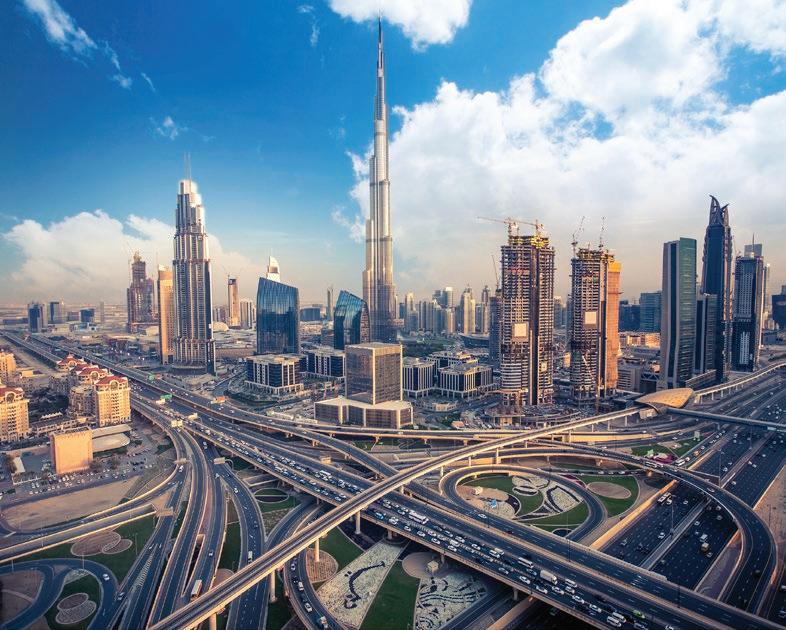
For his part, Shamsi says, the cost of cooling, which has traditionally been embedded in building management costs and rent, has become tangible with the increase in the number of jointly owned properties and with governments slowly reducing the subsidisation of electricity. In addition, Shamsi says, projects due for chiller replacements, and the intensive investment associated with such replacements, have persuaded building owners to seek alternative solutions, where such expenditures could be shifted to opex. In the industrial space, he says, the increase in demand
for products due to market growth and globalisation, which calls for the most sustainable production, along with the rise in utility-related costs, has led investors to recognise the need for more efficient and cost-effective solutions.
Weighing in, Prince says that the growth of CaaS in the GCC region is also associated with the increasing need for ESG reporting in the region. A chiller-based HVAC system, Prince says, contributes to 70% of entire energy consumption, and the companies require the associated ESG-related data to report on a weekly and monthly basis. Clients, unable to extract the date efficiently, owing to the lack of an adequate workforce, approach companies like EFS for cooling solutions, he says. ESG reporting, thus, has been indirectly playing a vital role in the increasing popularity of decentralised cooling solutions such as CaaS, he adds.
Prince also emphasises clients’ requirements for pay-per-use cooling models and highlights the importance of life cycle analysis in the effective implementation of pay-per-use cooling models. A complete life cycle analysis, Prince says, will help the client understand which model would work the best for their requirements, because pay-per-use cooling models do not work for everybody.
Meanwhile, Pereira says, clients now value the flexibility in the operations of pay-per-use cooling models. He says, “Clients are aware that pay-
per-use cooling models offer scalable solutions aligned with demand, avoiding large upfront costs and including maintenance.” Moreover, Pereira says, paying for cooling based on actual usage brings cost savings compared to ownership models, considering maintenance, repairs and energy use. “Energy-efficiency and carbon-reduction goals drive clients to seek high-performing, ecofriendly cooling solutions,” he says.
“Increased awareness of usage patterns encourages optimising efficiency for cost reduction, with pay-per-use models promoting responsible consumption and resource management.”
Weighing in, Shamsi shares an overview of the shift in client requirements for pay-per-use cooling models, especially in the industrial sector. He says clients seek more flexibility, cost-effectiveness and sustainability in their cooling solutions, as they face rising electricity prices, ageing cooling equipment and environmental regulations. Furthermore, he says the organisations in the GCC region are becoming more conscious of the environmental impact of cooling systems, and the pay-per-use cooling models can help organisations to reduce their carbon footprint and comply with environmental standards by providing access to state-of-the-art, energy-efficient cooling technologies that use natural refrigerants or renewable energy sources.
However, Shamsi says, challenges remain that hinder a more widespread shift to pay-per-use models. In general, he says, the concept of capexbased partnerships is quite new in the region. Moreover, he adds, most large organisations are uncomfortable partnering with a service provider out of fear of losing control over the quality of the service and utilities supplied, such as cooling. However, Shamsi says, with the rise in public-private-partnership projects between government and international organisations, confidence in capex-based partnerships will likely grow rapidly in the next few years.
One of the key challenges Taka Solutions faces, Pereira says, is the
September 2023 20
CaaS
COVER STORY
cultural and behavioural shift in customer behaviour. In other words, he says, changing the way customers think about cooling, ownership, service, and data can mean changing mindsets and attitudes towards sustainability. Furthermore, Pereira says, COP27, held in Egypt and the upcoming COP28 are also contributing to an increase in interest towards sustainability, and it will continue to rise in the future. As CaaS is a relatively new business model in the GCC region, and particularly in the UAE, he says, the efforts to create awareness are substantial, as compared to other business models, such as Energy Performance Contracts, which Taka has been doing for over 10 years now. “We are also experiencing the effects of different types of CaaS models being offered in the market, creating misconceptions, and as such, the journey of custom er education is ongoing,” he says.
Pereira also touches on the technical challenges and notes that they are thought-provoking. For instance, he says, integrating CaaS into existing infrastructure and processes is complex, and perceived issues relating to compatibility and retrofitting, can deter potential customers. Some clients, he says, are concerned about disruptions and operational downtime during installation, and tenant or guest complaints; and more so, we are seeing an increase in need to demonstrate how we build redundancy and fail-safe mechanisms in the systems. Furthermore, he says, advocates of CaaS face challenges out of customers’ perceived loss of control over the chiller plant.
For his part, Prince says some of the challenges surrounding pay-peruse cooling models involve managing existing chillers, implementing rebate models and assessing salvage possibilities. Companies, he says, face complexities in calculating salvage costs and aligning estimates with their accounts department, in addition to the challenges around repurposing existing workforce and incorporating them into the new model.
Further, taking the discussion to the role of governments in the GCC region countries in the growth of decentralised utility consumption models, Pereira says governments can play a pivotal role in fostering the growth of decentralised utility consumption models like CaaS by establishing a favourable regulatory framework, building rating systems, incentives and penalties, and ensuring fair competition amongst service providers. Additionally, Pereira says, governments can collaborate with private sector stakeholders to develop and implement decentralised utility consumption solutions, which will lead to technological advancements, cost reductions and improved efficiency. “Moreover, governments can create innovation hubs, incubators or accelerators focused on decentralised utility consumption technologies,” he says.
Shamsi also points to how government subsidies can benefit the decentralised utility consumption models along with incentives or regulations for using clean, renewable energy sources. Further, emphasising why governments should allow more flexibility for industrial and manufacturing plants to implement on-site utilities based on waste energy, bio-waste and natural gas, he says it will reduce their dependence on the grid and lower their costs. Finally, he says, authorities should support awareness campaigns and capacity-building programmes to educate consumers and stakeholders about the benefits of CaaS and other decentralised utility consumption models.
Prince puts forward a different perspective on the government’s role in decentralised utility consumption models and says that determining whether to adopt CaaS or not is primarily a company-specific decision, and that the role of government is limited. Governments, he adds, can offer support to the companies that opt for efficient decentralised cooling models rather than endorsing any specific model. Moreover, he says, governments can aid by implementing ESG reporting to ensure accountability.
namely customer-centricity and financing model and says CaaS solution providers can focus on delivering value to their customers by understanding their needs, preferences and feedback, and by tailoring their cooling solutions to the specific requirements of each customer segment, thus providing highquality service and support. Further, elaborating on the financing model, Shamsi says SaaS’ primary aim is to reduce or eliminate the initial capital investment in the assets and transfer the cost to the opex, hence enabling the service provider to sell at a premium whilst providing an affordable premium service that doesn’t cause a burden to the customer and makes financial sense over the asset’s life cycle.
SaaS models, Prince says, can serve as an effective benchmark for simplifying complex processes in CaaS, particularly regarding the initial analysis. CaaS providers, he says, can draw inspiration from how SaaS platforms streamline operations. Further, he underlines the importance of making the CaaS model user-friendly and accessible, especially to non-technical departments like finance, by using SaaS. By emulating the user-friendly nature of SaaS platforms, Prince says, CaaS providers can simplify their offerings and present information in an easily understandable way. “The goal,” he says, “is to bridge the gap between technical intricacies and comprehensibility, ensuring that even finance teams within companies can readily grasp and assess the financial implications of adopting the CaaS model.”
www.climatecontrolme.com 21
from Page 19
Continued
ARRESTING ‘PERFORMANCE DRIFT’ THROUGH MACHINE LEARNING
Building owners and operators can now leverage the newfound power of Machine Learning in HVAC systems to minimise maintenance and operational costs, says Kevin Laidler

September 2023 22
PERSPECTIVE Machine Learning, HVAC system maintenance
IN THE EVOLVING landscape of technology, Artificial Intelligence (AI) has emerged as an important feature that will affect all industries. Encompassing a vast array of cuttingedge systems, AI aims to replicate and even surpass human intelligence and behaviour.

Among the many applications within the realm of AI, Machine Learning stands out as a key, developing capability. By enabling machines to learn from data without explicit programming, machine learning has revolutionised the way systems operate. It is a technique that empowers systems to automatically improve their performance and make accurate predictions or decisions based on patterns and examples found in the data they are exposed to.
Unlike traditional software development, where explicit instructions are hand-coded for specific tasks, Machine Learning trains machines by exposing them to vast amounts of data and utilising algorithms that equip them with the capability to learn and execute the task effectively. Through this approach, machines can autonomously adjust their performance and adapt to various scenarii without the need for manual programming.
Machine Learning can play a
crucial role in HVAC applications, exerting a profound impact on the performance of systems while offering significant opportunities for cost savings. Leveraging Machine Learning capabilities can reduce building construction costs by up to USD 3 per square foot, and operating costs by approximately 40 US cents per square foot.
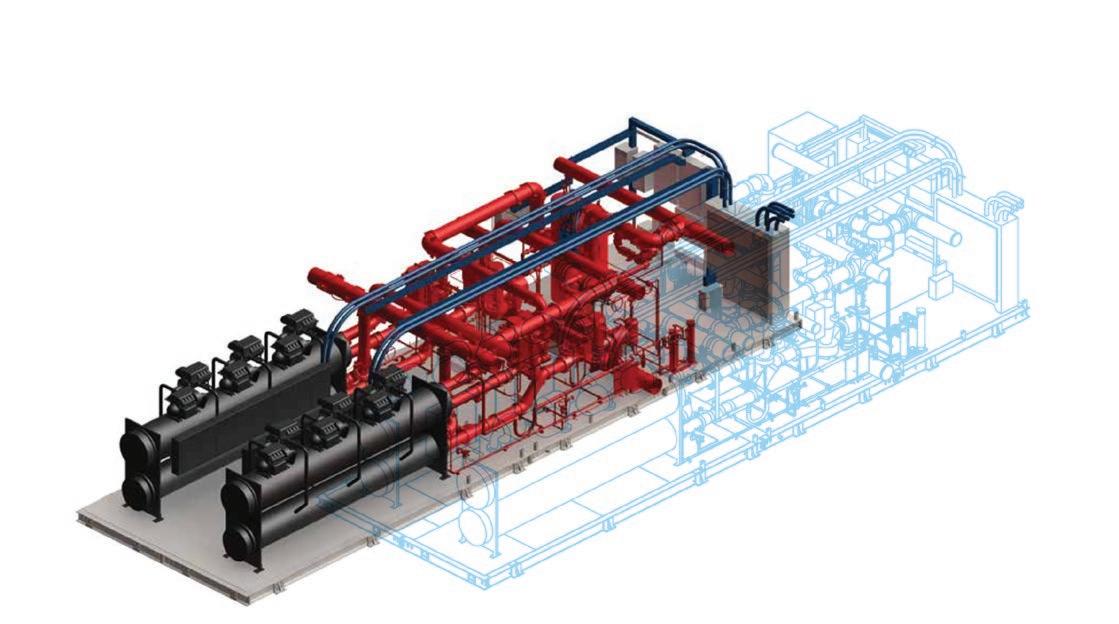
Another significant aspect of Machine Learning in HVAC applications is its ability to enhance occupant comfort. While various solutions exist
to maximise occupant comfort in buildings, these solutions typically incur additional costs. The ultimate goal is to achieve 100% occupant comfort without incurring expenses for idle assets. This means that building developers and owners seek to avoid the financial burden of additional equipment that remains underutilised for extended periods. Machine Learning offers a highly effective and efficient approach to address this challenge. It enables alignment of the HVAC system with occupants’ comfort requirements while
www.climatecontrolme.com 23
PERSPECTIVE
minimising unnecessary costs associated with underutilised assets, at a level of precision that a human operator would not have the patience for. Essentially, Machine Learning is a highly effective way to improve occupant comfort while reducing costs. However, the question remains: How does it do this?
As mechanical systems age, their operating performance tends to diminish compared to when they were initially commissioned. This gradual decline, known as performance drift, occurs as a result of minor changes in equipment behaviour. These changes can be attributed to issues like fouling or insufficient maintenance of specific components, such as clogged strainers or dirty filters. Consequently, the overall performance of the system gradually declines. On average, one can anticipate a 25% increase in power consumption for the same level of output.
However, the integration of Machine Learning goes beyond simply maintaining HVAC performance. It has, in fact, been proven to enhance system operation and efficiency over time, achieving an impressive increment of eight per cent. This is more than any previous approaches have been able to unlock before. This is achieved through learning and adaptation to various

Machine Learning, HVAC system maintenance
combinations and configurations to ultimately achieve performance and efficiency levels that surpass those during the initial commissioning phase.
For this process of enhancing HVAC system efficiency, Machine Learning capabilities manifest in the form of digital twin technology. This is where data collected from Internet of Things (IoT) devices is processed and utilised to create an exact digital replica of the live model — a digital twin. The sophisticated technology allows for the generation of insights that enhance operations, improve efficiency and identify potential issues in advance. It even enables testing and comparison of optimisation strategies before applying any changes to the physical system, thereby minimising the risks.
A digital twin continuously captures new data and updates all relevant variables over time, allowing for realtime monitoring of changes in the digital replica. Leveraging this dynamic information, a predictive model can be developed using digital twins to gain insights into the potential outcomes of operating the system differently. By simulating alternative scenarii, organisations can proactively assess the impact of different strategies and make informed decisions based on the
predictive capabilities offered by digital twin technology. To put it simply, how the HVAC system automatically adjusts performance is similar to the way a Sat NAV system recalculates a new route when a change of direction is observed. This ongoing, persistent optimisation strategy retains an impressive 25% of HVAC efficiency that is normally lost due to performance drift.
In addition, Machine Learning brings new opportunities for condition-based maintenance. Using automatic notifications, any equipment failures, service requirements and performance deviations can be detected well before performance drift occurs. This advancement opens up opportunities to improve service protocols, transitioning from a scheduled maintenance approach to condition-based maintenance. By proactively addressing maintenance needs, based on the actual condition of the equipment, operators can optimise efficiency and minimise downtime. In fact, it is possible to generate life-cycle cost savings of between 30% and 40% through this method of condition-based maintenance.
The integration of Machine Learning technology into HVAC systems offers great potential for building owners, operators and occupants alike. AIoptimised pump systems play a crucial role in lowering energy consumption, which leads to substantial reductions in operating costs and, ultimately, results in significant long-term savings for building owners and operators. These systems also necessitate less maintenance, effectively minimising the time and resources required for upkeep. And most importantly, the lower risk of failure associated with optimised HVAC systems ensures a more reliable and uninterrupted operation, providing enhanced comfort for building occupants.
The writer is Sales Director – Middle East & Africa, Armstrong Fluid Technology. He may be contacted at klaidler@ armstrongfluidtechnology.com
September 2023 24
CPI Industry accepts no liability for the views or opinions expressed in this column, or for the consequences of any actions taken on the basis of the information provided here.
Efficiency. Sustainability. Compliance.
LEADING HVACR AND WATER HEATING
EQUIPMENT MANUFACTURERS recognize AHRI certification programs and equipment performance standards as key to achieving energy efficiency, environmental sustainability, and regulatory compliance.

Through its extensive global network, only AHRI is positioned to provide the best solutions to help stakeholders navigate the ever-changing business environment.
At AHRI, we make life better. Let us show you how.
Learn more at ahrinet.org.
AN AFFINITY FOR GREEN COOLING

September 2023 26 Saudi Arabia COUNTRY REPORT
SAUDI ARABIA’S focus on mega cities, large-scale infrastructure projects and urban development has created significant opportunities for the HVACR industry. So believes Steve Lemoine, CEO Middle East, Dalkia EDF Group. These projects, as well as the various real estate developments, he says, have led to an increase in demand for HVACR systems in commercial, residential and industrial sectors in the country, and the entry of many newcomers in the field of HVACR.
Historically, he says, the market was organised around traders of equipment and equipment manufacturers, but today, the market has matured and is much more structured. “The development of the HVACR industry in Saudi Arabia is driven by innovative services, which include good quality of the latter, with detailed reporting and digital tools,” he says.
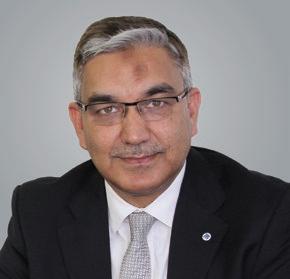
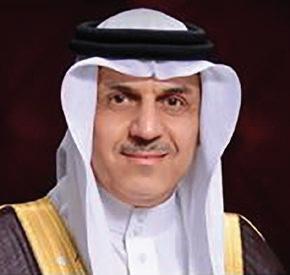

Joining the discussion, Khalid A Al Al Mulhim, Business Development Director, Suhaimi Design – Protecooling, says that since the launch of mega cities and mega-projects – as part of Saudi Vision 2030, targeting diversification of the economy from oil-dependence – the HVACR industry has seen a lot of development and growth in terms of market size and focus on sustainability. As the country pushes for greener alternatives for solving an ever-increasing demand for cooling in an inhospitable climate, he says, there is a huge impetus for further development of sustainable and green technology. Furthermore, Al Mulhim says, the focus on IAQ has been a significant factor in improving the filtration and ventilation systems employed to enable a healthier indoor environment, post-pandemic.
Asim Ahmad Hashmi, Sales
Director – Applied Business, SKM Air Conditioning Equipment, echoes Al Mulhim and Lemoine’s thoughts on the growth of the HVACR industry in Saudi Arabia. He says: “Saudi Arabia has launched many highprofile projects, and they are moving at a good pace. Therefore, there is a boom in Saudi Arabia’s HVACR market and enough business opportunities for manufacturers, suppliers and contractors.”
Shifting the discussion to the growth of green HVACR systems in Saudi Arabia, Al Mulhim says the demand for green HVACR systems in Saudi Arabia is on the rise, with market size expected to rise rapidly along with its increasing population and construction projects. Innovations, he says, are continuously being introduced in the market, offering better energy efficiency, environmental sustainability and user comfort. He says, “Some green systems being employed in the new projects are monitoringbased commissioning (MBCx), a building management methodology utilising the data from monitoring the building systems and analysing it for proper operational performance and energy efficiency; and District Cooling, which increases energy efficiency and reduces the overall carbon emissions of the HVAC system.”
Lemoine says green HVACR systems are still at the very beginning of their development and deployment in Saudi Arabia. To speed up the deployment of green HVACR systems, he says, there is a need for a more adapted regulation to promote these solutions. Moreover, he says, the Saudi green initiative and the country’s pledge to achieve net zero by 2060 will play an important role in setting up green standards and pushing the boundaries of implementing these clean solutions.
For his part, Hashmi says that the demand for green HVACR systems is likely to continue to grow in the country, especially in line with the national initiatives around sustainability and energy efficiency. For instance, he says, SKM has been promoting inverter technology integration, which is designed to achieve a high Seasonal Energy Efficiency Ratio (SEER), optimise
www.climatecontrolme.com 27
Whilst the launch of mega cities and mega-projects is the face of the new, bristling-with-energy Saudi Arabia, the real excitement is over the green framework within, and how it is shaping the country’s environmental destiny. Indu Revikumar has the story...
Steve Lemoine
Khalid A Al Mulhim
Asim Ahmad Hashmi
cooling, reduce energy wastage and contribute to the country’s renewable energy goals; and heat-recovery systems, which recover the wasted energy from the system and utilise it for maximising energy utilisation and reducing overall energy consumption and smart controls.
Hashmi, touching upon how green financing plays itself out in Saudi Arabia, says green financing for products and services can contribute to the country’s transition to a green economy, as it has a crucial role in supporting the initiatives of renewable energy projects and products. Besides the funding coming from overseas investors or institutions related to green initiatives, he says, banks have developed green financial instruments, like green bonds, green loans and sustainability-linked products to fund the projects or products, which results in positive environmental impacts and offers investors opportunities to align with sustainability goals.
Saudi Arabia, Lemoine says, is starting to develop such green financing mechanisms to accelerate the deployment of such sustainable solutions in the energy field. The local authorities, he says, are enhancing all kinds of low-carbon-generation solutions for a cleaner future and electricity. “Some of the largely deployed solutions across the country,” he says, “are solar
and wind generation, as well as more clean hydrogen and its derivatives.” Saudi Arabia, Lemoine says, is focusing on getting ready for a post-oil era. He believes that in the very short term, there is a trend of greater deployment of green financing, showing the world the Kingdom’s sustainable vision.
For his part, Al Mulhim says, Saudi Arabia has invested significantly to accelerate the green transition; however, a significant majority of existing facilities runs on more conventional technology, which is, in most cases, more cost-effective. The cost of implementation, he says, is still a stumbling block for many facilities in this regard. However, he expects that in a few years, as the green market starts to develop and become more competitive, the implementation of greener technology will be more universally adopted and will be encouraged by the country’s regulations and standards.
SAUDI ARABIA’S REGULATORY LANDSCAPE

To sell any product in Saudi Arabia, Hashmi says, requires the manufacturer to ensure that the product is SASOcompliant. SASO (Saudi Standards, Metrology and Quality Organisation) clearly defines minimum Estimated Energy Requirement. Therefore, he says, manufacturers design their products to meet the energy requirement of
SASO. For instance, Hashmi says, the country’s Tarshid (National ESCO –NESCO) is pushing inverter products for replacement projects, like Energy Service Companies (ESCOs) in Dubai. The residential villa segment is moving towards VRFs, making energy efficiency the prime focus, he says. And in the case of air-handling units (AHUs) and fan-coil units (FCUs), there is a big push for using EC motors instead of conventional AC motors, he adds.
Weighing in, Lemoine says that during the last few years, Saudi Arabia’s HVACR market has been shifting to a more structured organisation and is constantly increasing its standards. The common goal of local and international actors playing a role in the sector is not only to improve the quality of the services delivered – be they engineering, MEP or O&M – to the users but also to increase the lifetime of the equipment being serviced. In addition to this, Lemoine says, Saudi Arabia has launched an important plan to implement energy-efficiency measures, which include the modernisation and replacement of old and inefficient HVACR systems. Furthermore, he says, the recent increase in electricity prices in the country, due to fewer subsidies, and an increase of the VAT to 15% has also accelerated the trend of providing more efficient HVACR systems.
September 2023 28 Saudi Arabia COUNTRY REPORT
Whilst the thrust being given to the use of efficient HVACR equipment in the country is one aspect, the focus on refrigerants is another. Al Mulhim, giving an overview of the refrigerant landscape in the country, says efforts to phase out ozone-depleting agents, like CFCs and HFCs, have resulted in the development of equipment utilising more eco-friendly refrigerants. SASO, he says, provides energy-efficiency standards to encourage the development and production of higher-efficiency products and appliances. Al Mulhim says: “The increased emphasis on green architecture and sustainability also promotes lower power consumption by minimising cooling loads through better architecture and insulation. Moreover, standards and regulations have been developed for the integration of HVACR equipment with renewable energy sources, such as solar power, and the Saudi Building Code sets guidelines to ensure proper installation and maintenance of HVACR systems, which is necessary for their performance.”
Training programmes, he says, also have been introduced to produce well-equipped certified professionals to handle newer technologies, as per international best practices.
Further, touching upon how HVACR companies are responding to meeting the energy-efficiency requirements of the Saudi Building Energy Efficiency Code (SBEEC), Al Mulhim says the Code provides the standards and requirements for energy efficiency, and HVACR equipment manufacturers innovate and develop products to satisfy the standards. The resultant products, he says, are labelled based on energy efficiency in compliance with SBEEC.
He says that there is further development to be made in terms of energy auditing and enforcing mandatory compliance of the efficiency standards to meet with international specific energy consumption standards, which would incentivise and accelerate the transition to higher efficiency operation.
There are semi-government entities like Tarshid, Al Mulhim says, implementing energy conservation projects through ESCOs for many institutions. However, he
adds, there is still a lot of room for growth in terms of demand and implementation of advanced technology for higher efficiency operation. He says that another way to encourage efficiency in the public and private sectors is through performance contracts, where would guarantee a certain level of energy savings.
Lemoine says: “HVACR companies are already heavily involved with ESCOs like Dalkia to implement energy efficiency measures in buildings. By responding to the energy efficiency requirements of the Saudi Building Energy Efficiency Code, they would typically employ a range of strategies and technologies to meet the code’s standards.” In the case of Dalkia, he says, the focus is to adopt the most efficient solutions to reduce energy consumption, greenhouse gas emissions and overall operational costs for Dalkia and its clients in the long run. Furthermore, Lemoine says, Saudi Arabia has been actively deploying energy-efficiency measures in new buildings since 2017. The government, he says, encourages energy-efficiency improvements in existing buildings through registered ESCOs.
SUSTAINABLE SHIFT: DISTRICT COOLING IN SAUDI ARABIA
The District Cooling industry has been in Saudi Arabia for a long time, Lemoine says, and the acceleration of the construction of mega projects has been bringing in the need for more District Cooling networks. Though a District Cooling system is more efficient than the sum of individual systems, he says, if the density of the real estate project is high, investing in new District Cooling networks requires a long-life timeline and tight planning. Lemoine says: “Dalkia’s engagement usually covers between 20 and 30 years of investments and secures plants that are always up and running – plants that are efficient, digitalised and decarbonised.” Touching upon the decarbonisation of District Cooling plants, he says that the District Cooling sector will be one of the main beneficiaries of clean or decarbonised electricity, as the growth of renewable energy sources is tremendous in the country.
Al Mulhim is optimistic about the growth of District Cooling in the country. Highlighting the large-scale District Cooling projects launched in cities like Riyadh, Jeddah and Makkah, he says that demand is expected to grow, as many projects are in the pipeline. Furthermore, he says, the technological and other developments relating to District Cooling networks, such as advanced control systems, renewable energy integration, innovation in energy storage solutions, updated policy and regulations, and efficient building design, are aiding in fighting climate change. He says: “Renewable energy integration will help to reduce the carbon footprint of the District Cooling systems, in line with Saudi Green Initiative targets and will help diversify energy sources. There is much room for research, development and innovation in this field in Saudi Arabia, considering the amount of solar energy generation potential.”
Commenting on how Green Hydrogen can be effectively integrated as a source of energy for District Cooling systems, and its potential benefits in terms of sustainability and environmental impact, Lemoine says integrating Green Hydrogen as a source of energy for District Cooling systems can be a promising approach to enhance sustainability and reduce environmental impact. Moreover, he says, there are many ways to integrate Green Hydrogen into District Cooling systems effectively. Lemoine says: “Green Hydrogen is produced without emitting greenhouse gases, making it a clean energy source. Integrating it into District Cooling systems can help significantly reduce the carbon footprint associated with conventional fossil fuel-based energy sources.” As the global focus on sustainability intensifies, he says, the Saudi government may offer incentives and support for adopting green hydrogen, which can further enhance the economic viability of such systems.
For his part, Al Mulhim says that Green Hydrogen can be integrated using hydrogen-powered chillers and as an alternative power source using fuel cells. Hydrogen fuel, he says, offers zero emissions, diversification from fossil fuel and effective energy.
www.climatecontrolme.com 29
Danfoss
announces H1 results
The company says sales grew 13% compared to H1 2022
By CCME Content Team

DANFOSS announced its half-year results and said its transformation aligns with Core & Clear 2025, the company’s green growth strategy. Making the announcement through a Press release, the company said it has invested in the Middle East and Africa, digital transformation, innovation, expanding capacity, and regional footprint to offer customers and partners best-in-class solutions. Danfoss further said that it aims to be the preferred technology partner and to drive global decarbonisation with customers through energy efficiency, machine productivity, lower emissions and electrification.
Danfoss said sales grew 13% compared to the first half of last year, and organic growth was eight per cent, with EBITA margin reaching 12.4%. After continued strategic investments
in innovation and new technology, the company said, EBITA increased 20% to EUR 686 million, and earnings were driven by the higher topline, Middle East and Africa synergies and unwinding of the disruptions in global supply chains.

Kim Fausing, President & CEO, Danfoss, said: “I would like to thank the Danfoss team for delivering robust half-year results. Moreover, I would like to highlight our continued and strong
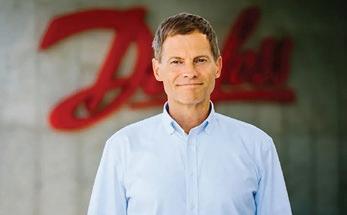
growth momentum in the Americas and India and in our Power Electronics and Drives segment.”
Danfoss said it closed the acquisition of the German compressor manufacturer, BOCK on March 1, which produces semi-hermetic compressors for natural refrigerants. Danfoss said it has invested in this area to broaden its portfolio of compressors with regard to the rising demand for climate-friendly technologies in commercial refrigeration systems. In addition, Danfoss said that the integration of Eaton’s hydraulics business and Semikron Danfoss are progressing.
Danfoss said that it has also taken another step towards the target of carbon neutrality in its own global operations (scope 1 & 2) by 2030 by signing a power purchase agreement for solar power in the US, starting in 2025. The company added that electricity will be sourced from a new six-square-mile farm in Texas, USA, and the groundbreaking is scheduled for November, with the farm becoming fully operational by the spring of 2025.
Fausing said: “We are determined to put sustainability at the heart of our business and committed to achieving carbon neutrality across our global operations by 2030. We are seeing strong progress in decarbonising scope 1 and 2, and scope 3 initiatives are ongoing. A good example is the new power purchase agreement that fully replaces our annual electricity usage in North America with green energy. It will cut our carbon footprint in North America by 75% and globally by 21%.”
Danfoss also said it aims to expand or maintain market share, and
September 2023 30 REGIONAL NEWS SCAN FOR MORE NEWS STORIES AND EVENT UPDATES NEWS FROM AROUND THE REGION
Kim Fausing
sales are expected to be EUR 10.411.9 billion for the entire year. The EBITA margin, the company added, is expected to be in the range of 11.5-13.0%, following the co ntinued integration of already acquired business and as investments in developing new products and solutions. The company further said that expected growth and profitability performance depend on the development of global supply chain disruptions, the crisis in Ukraine, inflation, the pandemic, and the general growth rates in the world economy.
According to Danfoss, key figures for the first six months of 2023 are:
• Sales increased 13% to EUR 5,528 million (H1 2022: 4,906 million), with organic growth of eight per cent.
• Investments in innovation (R&D) increased by 17% to EUR 249 million (H1 2022: 212 million), corresponding to 4.5% of sales (H1 2022: 4.3%).
• Investments (CAPEX) excluding the Middle East and Africa increased 68% to EUR 274
million (H1 2022: 163 million).
• Operating profit (EBITA) increased 20% to EUR 686 million (H1 2022: 570 million), leading to EBITA margin of 12.4% (H1 2022: 11.6%).
• Free operating cash flow after financial items and tax (before the Middle East and Africa) amounted to EUR -125 million (H1 2022: -226 million).
• Net profit increased 39% to EUR 402 million (H1 2022: 289 million).
AGBI report highlights Oman’s Green Hydrogen initiative
Firm says Oman signed contracts worth USD 20 billion with BP, Shell and Hydrom
By CCME Content Team
ARABIAN GULF BUSINESS INSIGHT
(AGBI) has reported that the Sultanate of Oman is dedicating an area the size of Slovakia to solar power projects to produce green hydrogen, a type of gas produced entirely from renewable sources.
AGBI said H.E. Salim Al Aufi, Minister of Energy and Minerals, Oman, signed contracts worth USD 20 billion with partners including BP, Shell and the newly formed Hydrogen Oman (Hydrom) to produce 500,000 tonnes of green hydrogen each year. Further, AGBI added that Hydrom announced that solidified commitments to initiatives in Oman had risen to USD 30 billion by July 28.
AGBI has reported that the production targets are set at one million tonnes by 2030, 3.75 million by 2040, and 8.5 million by 2050. This should make Oman, AGBI noted, the world’s sixth-largest exporter of hydrogen by 2030. AGBI also said that according to International Energy Agency, hydrogen exports are projected to be worth 80% of Oman’s current exports of liquefied natural gas (LNG) by 2040 and potentially double the value of Oman’s current overseas LNG sales by 2050. However, AGBI said it comes with challenges and added that technical issues limit long-distance transportation of the gas while regulations and
international markets are still being worked out.
According to AGBI, Charles Dolphin, Partner at CMS Energy, Infrastructure & Projects Group, noted that there is a significant amount of work to be done before hydrogen can become operational and productive. Furthermore, AGBI said that he also pointed out that this uncertainty is reflected in the wide range of approaches taken to the gas supply in the Gulf. Dolphin also said that other Gulf states are adopting a more private-sector approach. For instance, he said, the UAE and Saudi Arabia are witnessing less government involvement, except for for some initiatives to ramp up renewable energy projects to supply the electrolysers making the hydrogen.
AGBI also reported that S&P Global Commodity Insights said that Oman’s decision to embrace green energy is driven by the fact that it has some of the world’s leading renewable energy resources. Furthermore, AGBI added that James Burgess, an Energy transition reporter, said that Oman benefits from high irradiance, the power per unit area received from the sun, a good wind profile and a strategic location. Burgess also said that Oman is perfect for green hydrogen production due to these factors, in addition to the surplus
amounts of available and unused land.
Burgess said: “The relatively high price of the gas compared to the huge quantities of cheap renewable energy that are set to become available, plus Oman’s relatively small population and economy, means the bulk of the hydrogen generated will be for export. This also means getting to grips with the problem of transportation and converting it into hydrogen-heavy ammonia for shipping on tankers is one possible solution, which can then be converted back into hydrogen at its destination. However, while ammonia is definitely seen as the vector for transport at the moment, there are conversion losses at every step of this process.”
Burgess also commented on the pricing on the global market scale, which is still evolving. He said it could evolve like the early LNG market, where surplus hydrogen volumes from the major hubs eventually develop into a spot market.
Furthermore, while commenting on how local demand may shape the industry in the near future and considering the projects that have been announced in Oman and elsewhere in the Gulf region and are expected to be completed by 2030, Dolphin said that perhaps by the time they come online, the market will have matured, and the project’s time will have come.
www.climatecontrolme.com 31 // REGIONAL NEWS
Dubai World Trade Centre announces the ninth edition of Gulfood Manufacturing

The 2023 edition of the show will be held from November 7 to 9, the organisers say
By CCME Content Team
DUBAI WORLD TRADE CENTRE has announced the ninth edition of Gulfood Manufacturing, which will take place from November 7 to 9. Making the announcement through a Press release, the organisers said the three-day 2023 edition of the Gulfood Manufacturing will provide the industry stakeholders with an opportunity to explore the latest technology and innovations in the food and beverage manufacturing industry to
improve efficiency and meet new challenges.
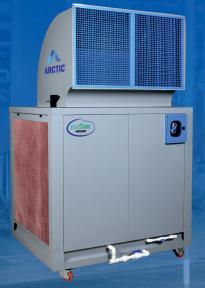
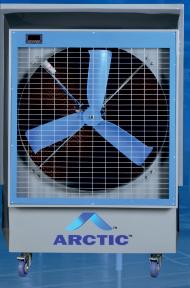
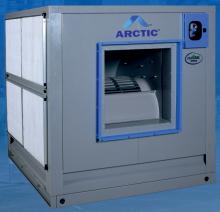
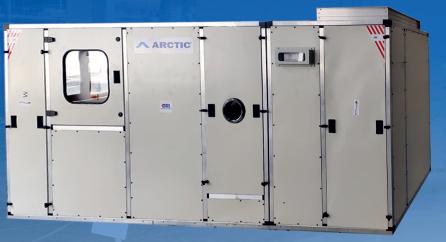


The organisers said the latest edition of the show will delve into the importance of packaging and food preservation, digital technologies optimising the F&B manufacturing processes, ways to enhance animal product alternatives and nutrition, the economics of F&B manufacturing, enhancements to FSQA using smarter technology and future-forward solutions,
leveraging technology to improve transparency in food systems and the evolution of F&B manufacturing landscape in the Middle East region.
According to the organisers, despite the challenges faced in the F&B manufacturing industry, such as rising input costs, consumer and retailer pressures, demands for low prices, and shifting preferences, the industry remains resilient and boasts a market value of USD 7,221.73 billion in 2023. Dubai World Trade Centre said the show will feature over 2,000 exhibitors and the most advanced food manufacturing solutions and trends of 2023. The organisers said over 100 industry experts will speak about advancing the future of food production at the FoodTech Summit, offering fresh new perspectives, insights and strategies on a dynamically shifting market.
September 2023 32 // REGIONAL NEWS





























































www.careersbay.com For all your headhunting needs, please contact: or email +971 50 3580708 alissa@careersbay.com
Parsons wins KAFD DMC’s contract
Company says contract will support the expansion of King Abdullah Financial District

 By CCME Content Team
By CCME Content Team

PARSONS CORPORATION announced that it has been awarded a fiveyear contract by the King Abdullah Financial District Development and Management Company (KAFD DMC) for project and construction management services in the King Abdullah Financial District (KAFD). Making the announcement through a Press release, Parsons Corporation said the contract will support the expansion of KAFD in the new undeveloped land.
Pierre Santoni, President, Infrastructure, EMEA, Parsons, said: ‘‘As one of the largest real estate projects globally with a ground floor area of
five million square metres, KAFD is a physical manifestation of Saudi Vision 2030. Furthermore, the KAFD ecosystem embodies the core values that underpin Saudi Arabia’s sovereign goals, and we are proud to support the government with this development and contribute to the growth and diversification of the district.’’
Parsons said that with a regional team of more than 6,000 employees, it will offer services across urban development, smart mobility, asset management, design, sustainability, and landscape architecture. The company further said it will provide comprehensive
project and construction management services for developing commercial, hospitality, residential, municipal, and mixed-use buildings and the associated infrastructure to support the high-rise development.
Parsons also said it is working with KAFD DMC to ensure all new buildings being constructed obtain LEED certification, including the first municipal fire station in the region to receive LEED Platinum certification. Furthermore, Parsons said it is jointly engaged to manage the design and construction of water recovery and reuse facilities to supplement scarce resources for development.
Gautam Sashittal, Chief Executive Officer, KAFD DMC, said: “While we are excited about the new construction and new buildings planned in KAFD, we remain steadfastly committed to reducing our carbon emissions. To date, over 40 of our buildings, ranging from office towers to residential and landmark buildings, have received Silver and Gold LEED certifications. And we look forward to this next chapter with Parsons ensuring the sustainability of our built environment and its decarbonisation.”
September 2023 34 // REGIONAL NEWS
LOOKING FOR REFRIGERATION PRODUCTS? www.refrigbuyersguide.com TO LIST YOUR COMPANY FOR FREE, VISIT: www.refrigbuyersguide.com/register FOR ADVERTISING OPPORTUNITIES, EMAIL: advertising@cpi-industry.com The largest database of refrigeration products & suppliers in the Middle East
Project Oman to showcase investment opportunities in Oman
Organisers say construction output in Oman is expected to reach OMR 3,356.9 million by 2026
By CCME Content Team
IFP GROUP, in collaboration with Al Nimr Expo, is set to organise Project Oman, the International Construction Technology, Infrastructure and Building Materials Exhibition, from October 23 to 25, at the Oman Convention and Exhibition Centre. According to IFP Group, Project Oman is the latest addition to IFP Group’s Project Series, which comprises premier construction exhibitions across the Middle East and Africa.

Making the announcement through a Press release, IFP Group said the exhibition aims to underline investment opportunities in Oman and optimise international trade relations and business partnerships.
IFP Group said the construction output in Oman is expected to reach OMR 3,356.9 million (approximately USD 8.73 million) by 2026, and the growth is fuelled by the government’s ambitious infrastructure projects, such as new airports, roads, bridges, and highways, to improve connectivity within
the country. IFP Group said Oman announced 18 investment opportunities worth more than USD 3.8 billion in the country.
According to the organisers, the exhibition will offer a platform to source the latest products, equipment and services from local and international construction industry specialists; help visitors gain access to investment and trade opportunities in the Omani market; enable networking with industry experts and will help visitors gain insights to the market dynamics and industry developments in Oman and explore Oman’s construction and infrastructure projects in the pipeline.
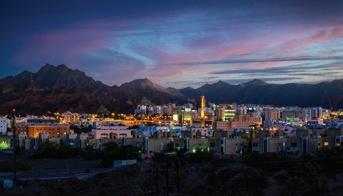
www.climatecontrolme.com 35
// REGIONAL NEWS
Johnson Controls appoints Paras Adhvaryu as GM for GCC Install Business
Company says he will lead the installation business for HVAC, Fire Oil & Gas, Fire Commercial, Controls, Security, and IREF
 By CCME Content Team
By CCME Content Team
JOHNSON CONTROLS Middle East & Africa has announced the appointment of Paras Adhvaryu as the General Manager for GCC Install Business. Adhvaryu will lead the installation business for HVAC, Fire Oil and Gas, Fire Commercial, Controls, Security, and IREF the announcement said, focusing on improving efficiency, defining the region’s strategic priorities, and driving growth.
Johnson Controls said Adhvaryu worked in various leadership roles in the HVAC, Oil & Gas, and Building

Management industries for over 23 years before joining Johnson Controls. The company further said that Adhvaryu’s diverse experience will enable him to oversee the strategies to best serve businesses and customers within the region.
Commenting on Adhvaryu’s appointment, Mohammad Khalid, Vice President & General Manager, Middle East & Africa, Johnson Controls, said: “We are pleased to have Paras Adhvaryu join us as General Manager for GCC Install Business. Furthermore, we are
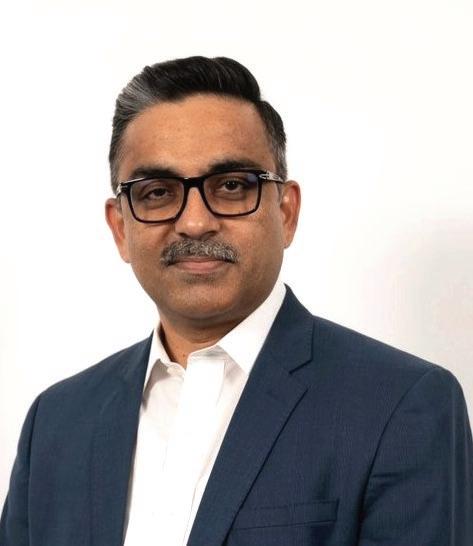 Paras Adhvaryu
Paras Adhvaryu
confident that his vast knowledge, experience, and range of skills will benefit our customers and lead our business in the region to new prospects and success.”
Adhvaryu, said: “Through my knowledge from past experiences and passion for technology, my aim is to work with colleagues and sales engineers to improve customer experience through Johnson Controls digital technologies and services that use artificial intelligence and data-driven solutions. Moreover, I am excited to help customers to achieve their sustainability goals and power their mission.”
September 2023 36 // REGIONAL NEWS
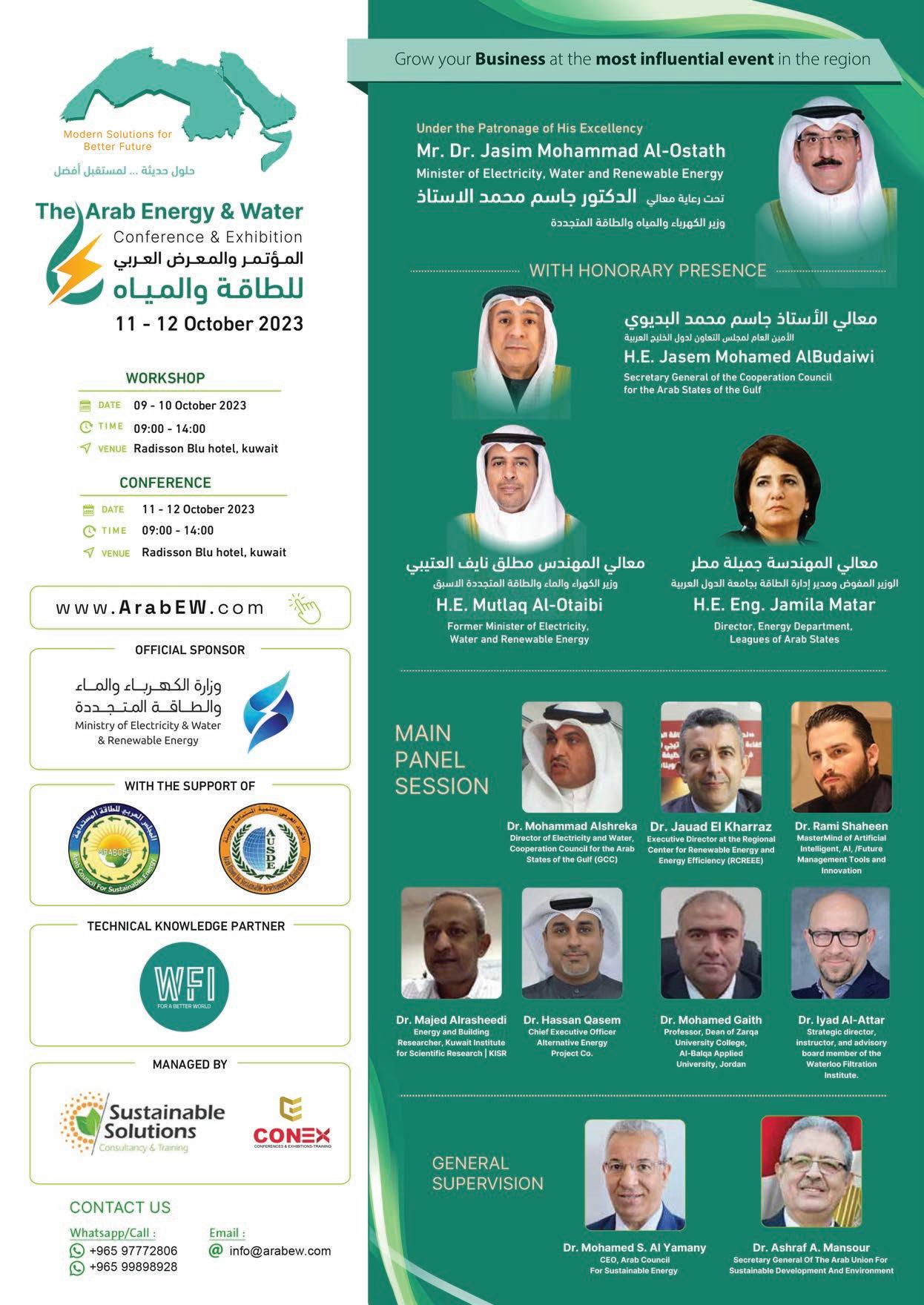
Eurovent PG-RAHU expands scope and re-elects Chairpersons
Organisation says it has widened the scope of the Product Group to include residential ventilation systems
By CCME Content Team


EURO VENT said its Product Group - Residential Air Handling Units expanded its scope and re-elected Xavier Boulanger of ALDES and Jaroslav Chlup of 2VV as its Chairperson and Vice-Chairperson for the next term during their last meeting.
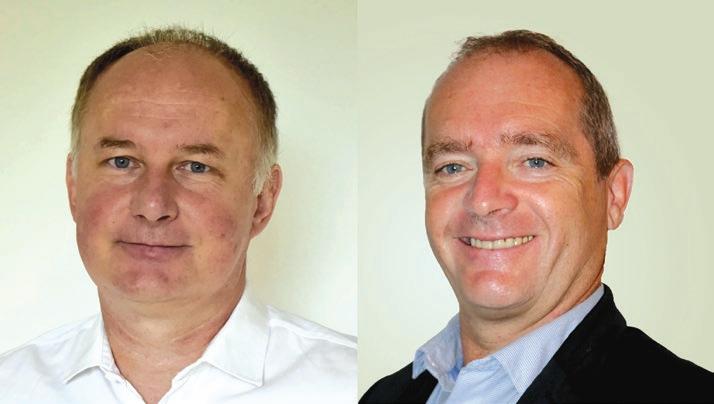
Making the announcement through a Press release, Eurovent stated that the Product Group has also changed its name from PG-RAHU to PG-RVS (Residential Ventilation System) during the meeting held on May 17. The approach, Eurovent
said, is in line with their aim to extend the scope of the Product Group to include components, such as ducts, IAQ sensors, VAV valves, and UVUs. Eurovent further said that the group also conducted its Chairperson elections during the meeting, unanimously re-electing Boulanger and Chlup to their positions. Boulanger will be serving his third term as the Chairperson, while Chlup continues his Vice-Chairperson role for the seventh consecutive year, having initially been elected in September 2016, Eurovent said.
Commenting on the occasion, Boulanger said: “It is an honour for me to be re-elected as the group Chairperson and to have its participants bestow their trust on me once again. The members of PG-RVS decided to expand the scope of the Product Group to include system components and UVUs, and to change its name from PG-RAHU to PG-RVS.” With so much at stake in the circular economy, “it is our responsibility to ensure that any measures are harmonised across the European Union and do not lead to the creation of trade barriers between different Member States through the one-off national circular economy and sustainability measures.”
Boulanger further said it is important for the residential ventilation group to lobby for a higher penetration rate for ventilation by acting on European directives, such as the EPBD, and to help communicate the IAQ performance of products and their direct or induced thermal performance. This group, he added, is also a forum for discussions that should help to develop both new testing methods and guidelines to ensure that suitable ventilation systems are used in buildings so that air quality and thermal performance can be verified.
September 2023 38 GLOBAL NEWS HAPPENINGS FROM AROUND THE WORLD
SCAN FOR MORE NEWS STORIES AND EVENT UPDATES
Jaroslav Chlup
LOOKING FOR HVACR PRODUCTS? www.climatecontroldirectory.com TO LIST YOUR COMPANY FOR FREE, VISIT: www.climatecontroldirectory.com/register FOR ADVERTISING OPPORTUNITIES, EMAIL: advertising@cpi-industry.com The region's comprehensive online directory for the HVACR industry
Xavier Boulanger
Chlup said: “With PG-RVS, I am looking forward to a broader and more comprehensive Product Group addressing the entire ventilation system, encompassing all components, with the residential ventilation unit at its core. I believe that our work in the future will
contribute to better and clearer legislation and standardisation in our area.”
Eurovent said PG-RVS would cover residential ventilation units (bidirectional and unidirectional) and elements of residential ventilation systems (ductwork, IAQ sensors, VAV valves) and deal with
FOUNDED TO LEAD
Allied has grown into one of the leading Engineering and Project Management firms in the Middle East, boasting offices in 3 major Countries in the Middle East (Egypt, United Arab Emirates, Kingdom of Saudi Arabia).


Allied offers full range of Engineering and Project Management services provided by nearly 140 dedicated professionals distributed among Egypt, UAE and KSA.
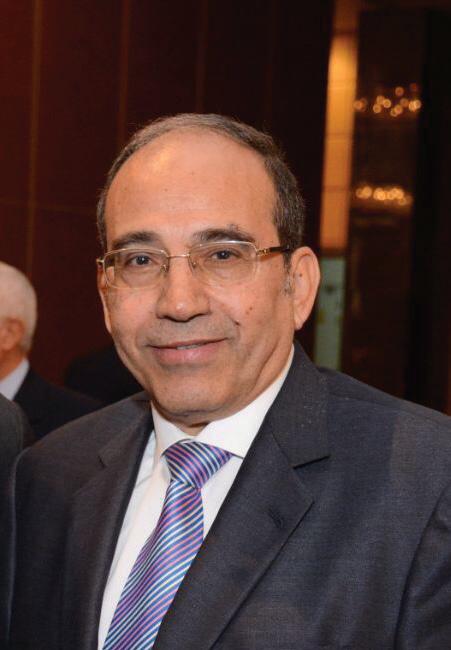
The company is a multidisciplinary consulting firm and has a track record and specialization in Buildings, Industrial Works and District Cooling and Power Generation Plants.
the ventilation units themselves and their components such as air filters, energy recovery components and fans. The group’s main tasks, Eurovent added, are advocacy on European and national legislation, EN, ISO and Eurovent standardisation development.
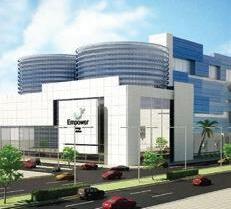
www.climatecontrolme.com 39 // GLOBAL NEWS
GEA supplies a heat recovery system to Britvic
By CCME Content Team
GEA has announced that it has supplied a heat recovery system to Britvic, a soft drinks manufacturer in the United Kingdom. Making the announcement through a Press release, GEA said the installation would begin in the summer and would result in cutting the factory’s carbon emissions by an estimated 1,200 tons annually, which is equivalent to the annual energy usage of around 500 homes in the UK.
GEA said it would supply two industrial ammonia heat pumps and a large thermal storage tank to Britvic’s site in Beckton, London. For Britvic, GEA said, the project is a major step towards its goal of reducing direct carbon emissions by 50% by 2025 and achieving net zero by 2050.
Sarah Webster, Director, Sustainable Business, Britvic, said: “The challenge with this brown-field project was how the improvements support us on our journey to reduce our Scope 1 and Scope 2 emissions as part of our science-based targets and our Healthier People, Healthier Planet sustainability strategy. Moreover, we are excited to be working with GEA to
make our London factory sustainable for the future.”
Matthew Hadwen, Beverage Sales Manager, Liquid & Powder Technologies Division, GEA, said: “Upgrading legacy industrial steam heating systems and integrating these with heat pump technology is a challenge. At GEA, we can supply heat pumps and integrated process heat exchanger skids as one solution. This clearly sets us apart from our competition.”
Simon Gurr, Sales Manager, Heating & Refrigeration Division, GEA, said: “This project provides us with an opportunity to extend our leading role in industry decarbonisation. GEA’s expertise in both heat pump technology and process integration brings the right solution to Britvic.”
GEA also said that Britvic would convert much of its process heating from natural gas steam boilers to carbon-free heat recovery systems driven by heat pumps. GEA further said the new heat recovery system, will reuse low temperature waste heat from the existing production system, and waste heat, which was previously released into the atmosphere, will now

be used to heat hot water to 92°C and willl be distributed throughout the plant. Britvic said this will decarbonise 50% of the site’s heat demand by using less gas in the traditional steam boilers, shifting the heat source away from fossil fuels. A valved connection, Britvic added, is provided for up to 750 kW of heat, which will be recovered in the future from other sources.
GEA said that Britvic would be converting a significant portion of its process heating from natural gas steam boilers to carbon-free heat recovery systems driven by heat pumps. GEA further said the new heat recovery system would repurpose low-temperature waste heat from the existing production system. Previously, GEA added, this waste heat, which was released into the atmosphere, will now be utilised to heat hot water up to 92 degrees C and will be distributed throughout the plant. Britvic said that this action would result in the decarbonisation of 50% of the site’s heat demand by reducing the use of gas in traditional steam boilers and transitioning the heat source away from fossil fuels.
September 2023 40 // GLOBAL NEWS
Company says it is a major step towards Britvic’s efforts to reduce carbon emissions
REFRIGERATION MIDDLE EAST
GEA RedGenium heat pump

JOIN HUNDREDS OF SUPPLIERS LISTED IN DEADLINE: OCTOBER 20, 2023 refrigbuyersguide.com Submit your FREE-listing entry at BROUGHT TO YOU BY CLIMATE CONTROL MIDDLE EAST A reference hub for the refrigeration industry in the Middle East LOOKING FOR REFRIGERATION PRODUCTS? FOR ADVERTISING OPPORTUNITIES EMAIL: advertising@cpi-industry.com
International Institute of Refrigeration announces appointment of new Director General

Dr Yosr Allouche will officially take the lead during the second half of 2024
By CCME Content Team
THE INTERNATIONAL Institute of Refrigeration (IIR) announced the appointment of Dr Yosr Allouche as the organisation’s new Director General. Making the announcement through a Press release, IIR said Dr Allouche is the first woman to hold the position.



IIR said that Allouche, a Norwegian-Tunisian refrigeration scientist, will replace Didier Coulomb, who will be stepping down from the role after 20 years. IIR further said Allouche was nominated by Norway (Norwegian Ministry of Foreign Affairs; Norwegian Embassy in France) and selected against Yannick Mathieu, nominated by the French Association of Refrigeration (Association Française du Froid) on the eve of the 26th IIR International Congress of Refrigeration in Paris.
IIR also said that Allouche, who has 13 years of experience in the field, will officially take the organisation’s lead during the second half of 2024.
Commenting on her appointment, Allouche said: “I am thrilled and thankful for the trust our member countries have placed in me to ensure this high-level role. As a refrigeration
scientist, it is an honour to be elected by our member countries as the first woman to succeed the leading figures of the IIR. I will put all my skills, knowledge and energy to add value for our organisation, countries and members.”
IIR said Allouche, the head of projects at IIR, holds a PhD in Mechanical Engineering from the Faculty of Engineering of the University of Porto (Portugal) and has published numerous articles in
scientific journals, guides and reports. IIR further said she was a research scientist in Refrigeration Technology at the
Norwegian University of Science and Technology (NTNU) and holds an invited Associate Professor title at NTNU since 2021.
To find out more, go to www.guntner.com/sustainability-hub
September 2023 42 // GLOBAL NEWS
SIX SUSTAINABILITY PLEDGES
SIX PLEDGES. ONE FUTURE. OUR RESPONSIBILITY. WE’VE SET IN STONE
FOR 2030
Guntner Middle East FZE. | P.O. Box: 341179, Dubai Silicon Oasis HQ, A505, Dubai, United Arab Emirates guntner.com| info-gme@guntner.com| Phone: +971 4 3712821
REFRIGERATION MIDDLE EAST
Dr Yosr Allouche




www.climatecontrolawards.com For editorial enquiries: Surendar Balakrishnan Co-Founder & Editorial Director M: +971 50 509 2457 | E: surendar@cpi-industry.com For sponsorship enquiries: Frédéric Paillé Co-Founder and Commercial Director M: +971 50 714 7204 | E: fred@cpi-industry.com STRATEGIC KNOWLEDGE PARTNER STRATEGIC RECRUITMENT PARTNER ASSOCIATE SPONSOR GOLD SPONSOR OFFICIAL PUBLICATION PRODUCER
ASHRAE announces 2023-24 Society Scholarship recipients
The scholarships, worth USD 219,500, will be awarded to 40 recipients, Society says
By CCME Content Team
ASHRAE has announced the recipients of 40 Society scholarships, totalling USD 219,500 for the 2023-24 academic year.
Commenting on the occasion, Ginger Scoggins, P.E., President, ASHRAE, said: “ASHRAE Society scholarships are investments in the future of our industry. Moreover, by supporting the development of talented students, our aim is to empower them to drive innovation, sustainability and progress in the built environment.
Congratulations to this year’s recipients.”
ASHRAE said the Presidents Scholarship provides USD12,500, and the recipient is Danielle Tessier, Sustainable and Renewable Energy Engineering, Carleton University.
According to ASHRAE, the following awards provide a USD 10,000 scholarship:
Willis H. Carrier Scholarships
Brendon Little, Architectural Engineering - Mechanical option, Pennsylvania State University and Saquib Khan, Mechanical Engineering, Maharaja Agrasen Institute of Technology, ME, are the recipients of the Willis H. Carrier Scholarship, established by the Carrier Corp., in memory of its founder, who installed the world’s first scientifically designed airconditioning system.
Gordon V. R. Holness Engineering Technology Scholarship
Kiran Kapileshwari, Mechanical Engineering, Georgia Institute of Technology; Michel Cherian, Building System Engineering Technician, Seneca College; and Ivy Arnold, Architectural Engineering Technology, Vermont Technical College, are the recipients of the Gordon V.R. Holness Engineering Technology Scholarship named in honour of ASHRAE Presidential Member Holness, P.E., Fellow ASHRAE, Life Member, who served as the Society’s president in 2009-10.
Reuben Trane Scholarships
Alvin Hsieh, Engineering Mechanics, University of Wisconsin-Madison; Dylan Ricard, Mechanical Engineering, University of Manitoba; and Heather Ritter, Mechanical Engineering And Business, University of Calgary, are the recipients of a Reuben Trane Scholarship, which is to be awarded over two years and was established by the Trane Co. in memory its founder, an innovative engineer, inventor and business executive, who held 28 patents.
According to ASHRAE, the following awards provide a one-year USD 5,000 scholarship:
Lynn G. Bellenger Engineering Scholarship
Sadia Ashraf, Mechanical Engineering, University of Houston and Paulina Salinas, Mechanical Engineering Technology, University of North Carolina at Charlotte, are the recipients of the Lynn G. Bellenger Engineering Scholarship, which recognises female undergraduate engineering students and is named in memory of the Society’s first female president, who served as the Society’s president in 2010-11.
Engineering Technology Scholarship
Nathan Steil, Civil & Environmental Engineering Technology and Architectural Engineering Technology, Vermont Technical College, is the recipient of the Engineering Technology Scholarship.
Frank M. Coda Scholarship
Kamran Ali, Thermal Engineering, HVAC, Theory Of Machine, Fluid Mechanics, Strength Of Material, Maharaja Agrasen Institute of Technology, is the recipient of the Frank M. Coda Scholarship, created in memory of ASHRAE’s former executive vice president, who served from 1981-2004.
Alwin B. Newton Scholarship
Alyssa Bentsen, Mechanical Engineering, University of Victoria, is the recipient of the Alwin B. Newton Scholarship, named for an industry pioneer and ASHRAE Fellow who was granted 219 patents.
Duane Hanson Scholarship
John McCulloch, Mechanical Engineering, Texas A & M University and Texas University, is the recipient of the Duane Hanson Scholarship, established by Gayner Engineers and is named for the company’s former president.
Legacy Scholarship
Haley Steele, Mechanical Engineering, Grove City College, is the recipient of the Legacy Scholarship.
General Scholarship
Abby Hans, Architectural Engineering Technology, University of Cincinnati and Jessica Burke, Architectural Engineering, University of Cincinnati, are the recipients of a General Scholarship.
Charles E. Henck Scholarship
Tyler Patterson, Physics And Mechanical Engineering, Virginia Tech, is the recipient of the Charles E. Henck Scholarship, which recognises students within the geographical area of ASHRAE Region III (Delaware, Maryland, Pennsylvania, Virginia, Washington DC).
Prem Jain Scholarship
Kavya Taneja, Mechanical Engineering, Maharaja Agrasen Institute Of Technology, is the recipient of the Prem Jain Scholarship. The scholarship was created by Dr. Prem Jain, Life Member of ASHRAE, founder of ASHRAE’s India Chapter-at-Large & presidential member of the ASHRAE India Chapter, founder and presidential member of ISHRAE (Indian Society of Heating, Refrigeration, and Air-Conditioning Engineers).
September 2023 44 // GLOBAL NEWS
Rusty & Debbie Hoffman Family Scholarship
Sahib Zubair, Mechanical Engineering, Aligarh Muslim University, is the recipient of the Rusty & Debbie Hoffman Family Scholarship.
William P. Chapman Scholarship
Lokesh Sriram, Mechanical Engineering, Purdue University, is the recipient of the William P. Chapman Scholarship. Chapman served as Society president from 1976-1977.
David C.J. Peters Scholarship
Geoffrey Sanderson, Architectural Engineering, University of Nebraska, is the recipient of the David C. J. Peters Scholarship created by Southland Industries to honour Peters, an advocate of recruiting quality.
ASHRAE Region IV Benny Bootle Scholarship
Isabella Bernagozzi, Architectural Engineering, Clemson University, is the recipient of the ASHRAE Region IV Benny Bootle Scholarship, named for a former Region IV chair and regional director on the ASHRAE Board of Directors.
Freshman Engineering Scholarship
Sen Gharibyan, Mechanical Engineering, Cal Poly San Luis Obispo,
is the recipient of the Freshman Engineering Scholarship. According to ASHRAE, the following awards provide a one-year USD 3,000 scholarships:

Henry Adams Scholarship Varun Chauhan, Mechanical Engineering, Lokmanya Tilak College of Engineering, is the recipient of the Henry Adams Scholarship, named in memory of charter member and sixth president of ASHRAE’s predecessor society, ASHVE.
Donald E. Nichols Scholarship
Spencer Meeks, Mechanical Engineering, Tennessee Technological University, is the recipient of the Donald E. Nichols Scholarship, named for a former ASHRAE vice president and graduate of Tennessee Technological University.
ASHRAE Region I Setty Family Foundation Scholarship
William Hanna, Mechanical Engineering, Stevens Institute of Technology, is the recipient of the ASHRAE Region I Setty Family Foundation Scholarship named in honour of Boggarm Setty, Fellow ASHRAE, Life Member.
ASHRAE Region III Setty Family Foundation Scholarship
Nathan Kurtz, Architectural Engineering, Pennsylvania State University, is the recipient of the ASHRAE Region III Setty Family Foundation Scholarship.
ASHRAE Region VIII Scholarship
John Flores, Mechanical Engineering, Texas Tech University, is the recipient of the ASHRAE Region VIII Scholarship.
ASHRAE Central New York Chapter King-Traugott Scholarship
William Hemmer, Mechanical Engineering, University of Kentucky, is the recipient of the ASHRAE Central New York Chapter King-Traugott Scholarship, named in memory of ASHRAE Life Members Fritz Traugott, Ph.D., Fellow ASHRAE, and Harry King.
Minnesota Chapter – Peter Potvin Scholarship
Million Bayissa, Mechanical Engineering, Minnesota State University, is the recipient of the Minnesota Chapter - Peter Potvin Scholarship.
Ottawa Valley Chapter Scholarship
Gabrielle Milburn, Architectural Conservation & Sustainability Engineering, Carleton University, is the recipient of the Ottawa Valley Chapter Scholarship.
New Jersey Chapter Scholarship
Kristopher Poirier, Electromechanical Engineering, Wentworth Institute of Technology, is the recipient of the New Jersey Chapter Scholarship.
ASHRAE said applications are now being accepted for the 202425 undergraduate engineering, technology, regional/chapter, and university-specific scholarships. The application deadline is December 1, 2023, the Society added.
For more information on ASHRAE’s scholarships, including eligibility requirements and application materials, visit ashrae. org/scholarships.
www.climatecontrolme.com 45 // GLOBAL NEWS
We bring you a collection of some of the most interesting quotes, extracted from articles in this issue. In case you missed reading, we recommend you flip back to take full advantage of the insights and remarks, in the context in which they have been presented.
For businesses and enterprises here on Earth, the controlling metric is “liquidity”. As we proceed along a period of increasing uncertainty across the world in Q4 2023 and further beyond, it only makes sense for businesses around the world to take a leaf out of the book of the Chandrayaan-3 mission, identify that conserving business liquidity is of fundamental importance to navigating a turbulent environment, and make business decisions with this aim at the centre.
His statement, “Private capital is the force multiplier that can really change the game when it comes to effective climate finance”, raises the transformational idea of engaging giant private capital than helplessly depending on small (and poorly performing) international financial agencies. H.E. Dr Al Jabar was, in fact, presenting disruptive financial engineering as a pathbreaking idea.
It was, indeed, interesting to collect data – measuring the column surface temperatures at different heights surrounding the ice rink and recording for detailed analysis. Effectively, the major problem was solved by upgrading the fresh air-handling units (FAHUs) to handle the additional moisture due to ice rink evaporation and keeping the areas surrounding the ice rink under positive pressure – a combination of additional dehumidification and fresh air quantity to positively pressurise the facility.
During the last few years, Saudi Arabia’s HVACR market has been shifting to a more structured organisation and is constantly increasing its standards. The common goal of local and international actors playing a role in the sector is not only to improve the quality of the services delivered – be they engineering, MEP or O&M – to the users but also to increase the lifetime of the equipment being serviced.
For a classroom, ASHRAE 62 requires approximately 13 cfm/person, whereas ASHRAE 241 will require 40 cfm/person. Increasing the amount of fresh air by a factor of 3 isn’t possible for many systems, and will drive energy cost and carbon emissions to very high levels.
Some of the challenges surrounding pay-per-use cooling models involve managing existing chillers, implementing rebate models and assessing salvage possibilities. Companies face complexities in calculating salvage costs and aligning estimates with their accounts department, in addition to the challenges around repurposing existing workforce and incorporating them into the new model.
September 2023 46
{Quoteyard}
p07
p16
p09 p28
p11 p21
LOOKING FOR HVACR PRODUCTS? FOR ADVERTISING OPPORTUNITIES, EMAIL: advertising@cpi-industry.com 2024 YOUR GATEWAY TO THE HVACR INDUSTRY IN THE MIDDLE EAST JOIN HUNDREDS OF SUPPLIERS LISTED IN BROUGHT TO YOU BY CLIMATE CONTROL MIDDLE EAST DEADLINE: NOVEMBER 15, 2023 Submit your FREE * listing entry at climatecontroldirectory.com * up to 15 product categories
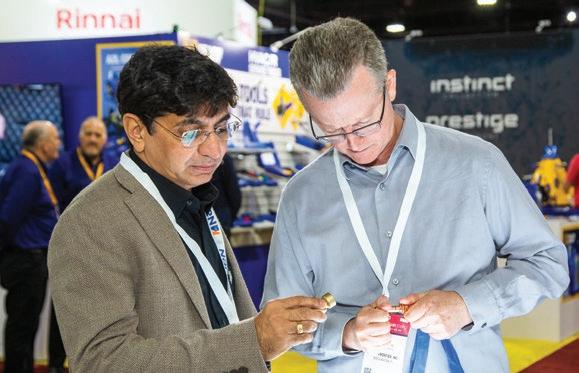

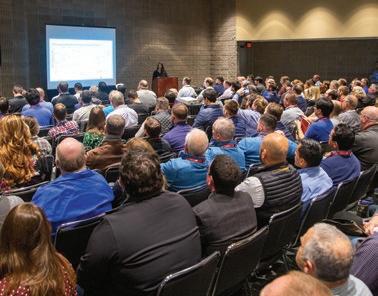
Join us in Chicago for the latest updates on: AI & Controls Decarbonization Solutions Plumbing & Hydronics Heat Pumps Refrigerants Workforce Development Application & Practical Learning Business & Professional Growth Are you ready for what’s next in HVACR? Register for free at ahrexpo.com
















































 Jason Prince, GM – Sales & Business Development, EFS Facilities
Jason Prince, GM – Sales & Business Development, EFS Facilities



































































 By CCME Content Team
By CCME Content Team



 By CCME Content Team
By CCME Content Team

 Paras Adhvaryu
Paras Adhvaryu




















